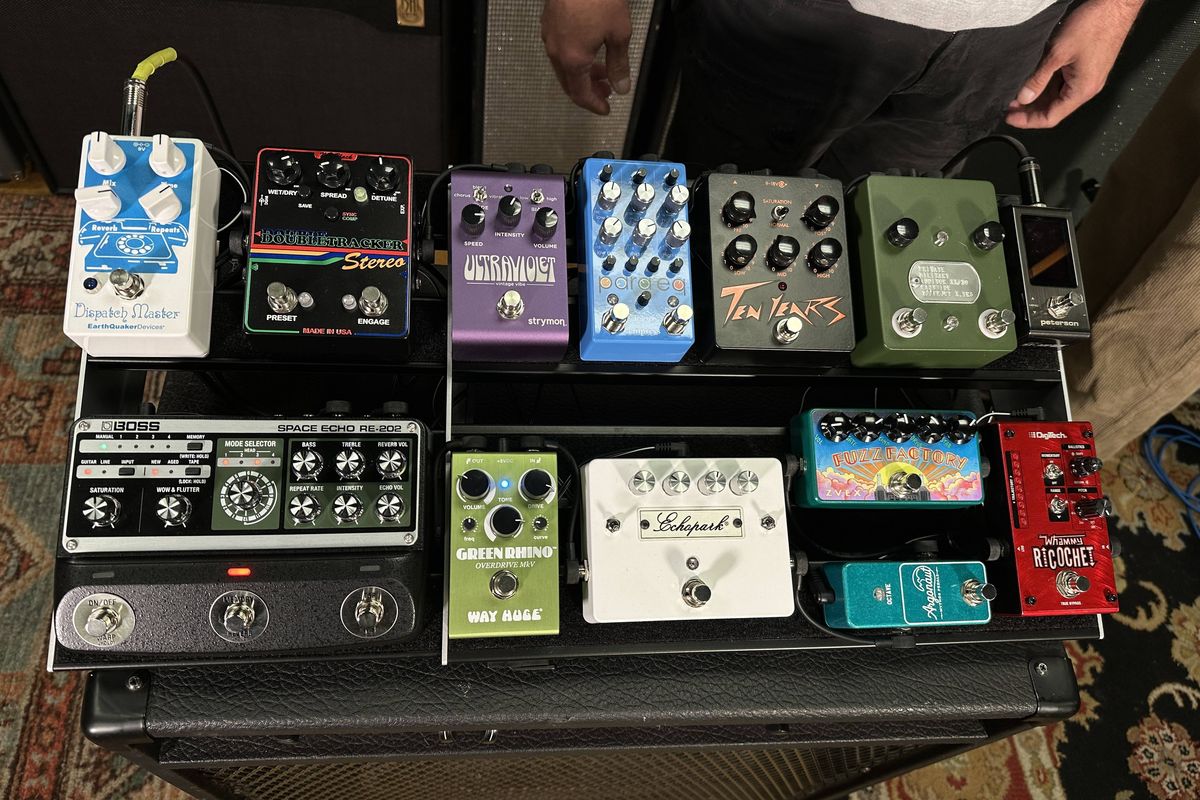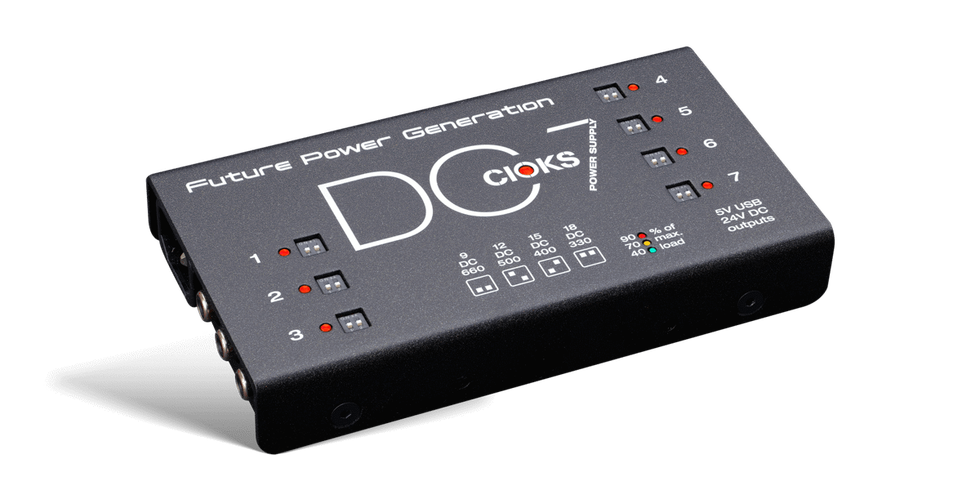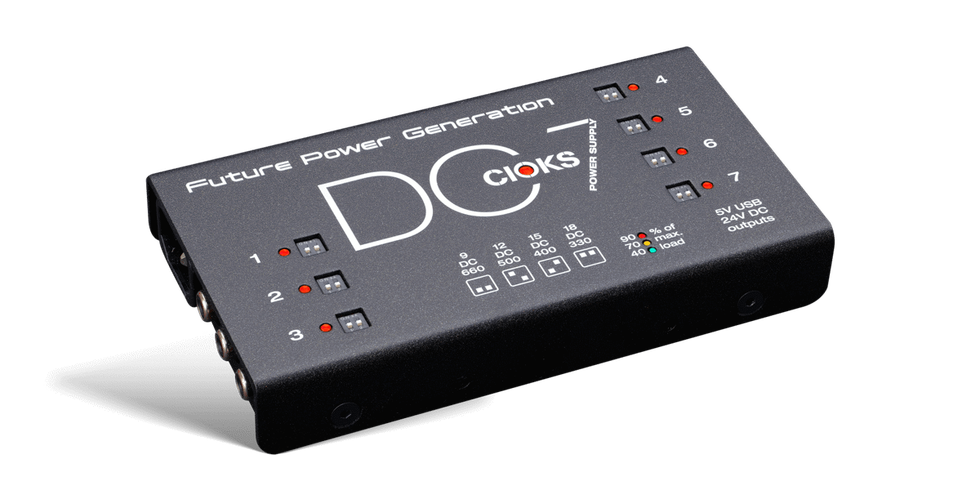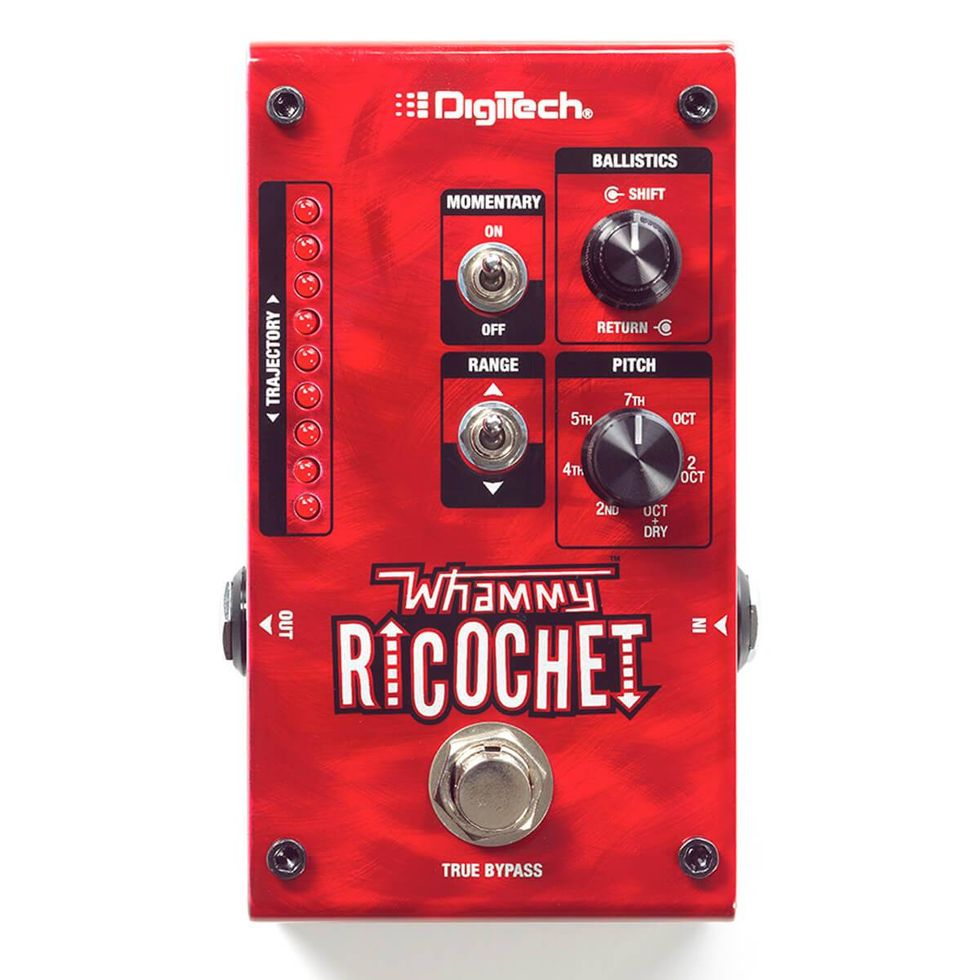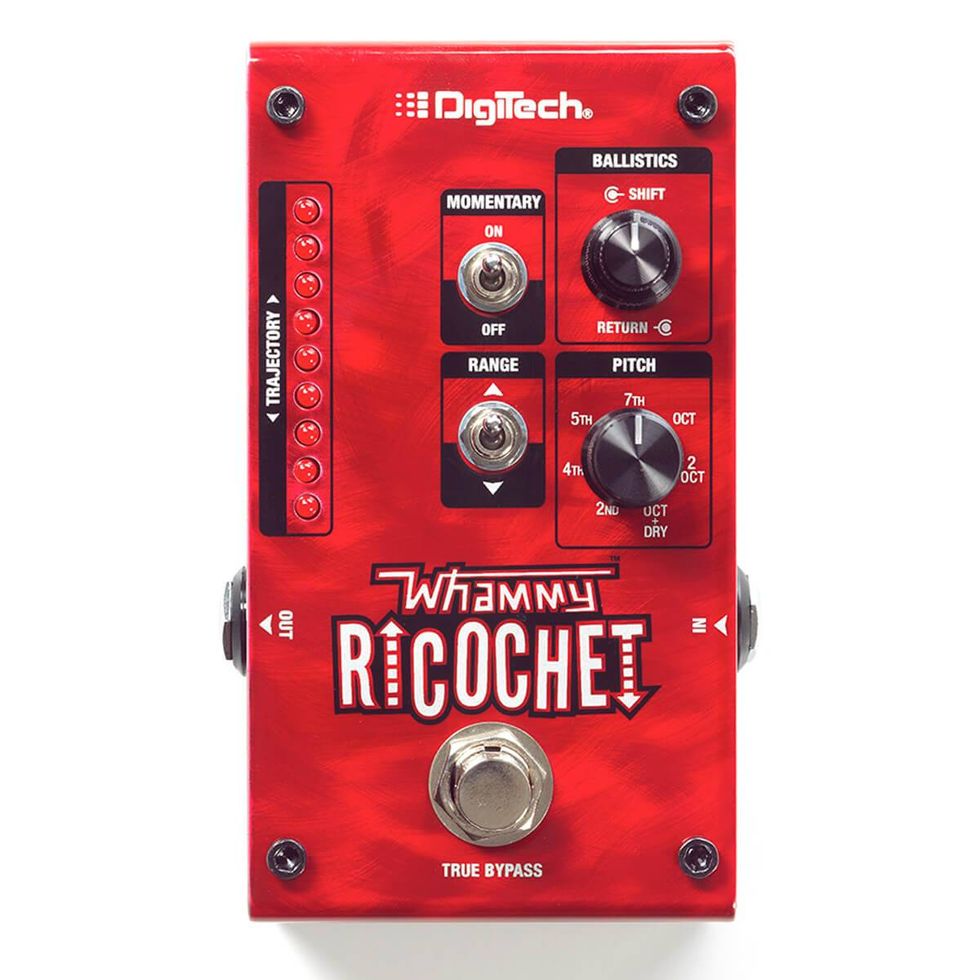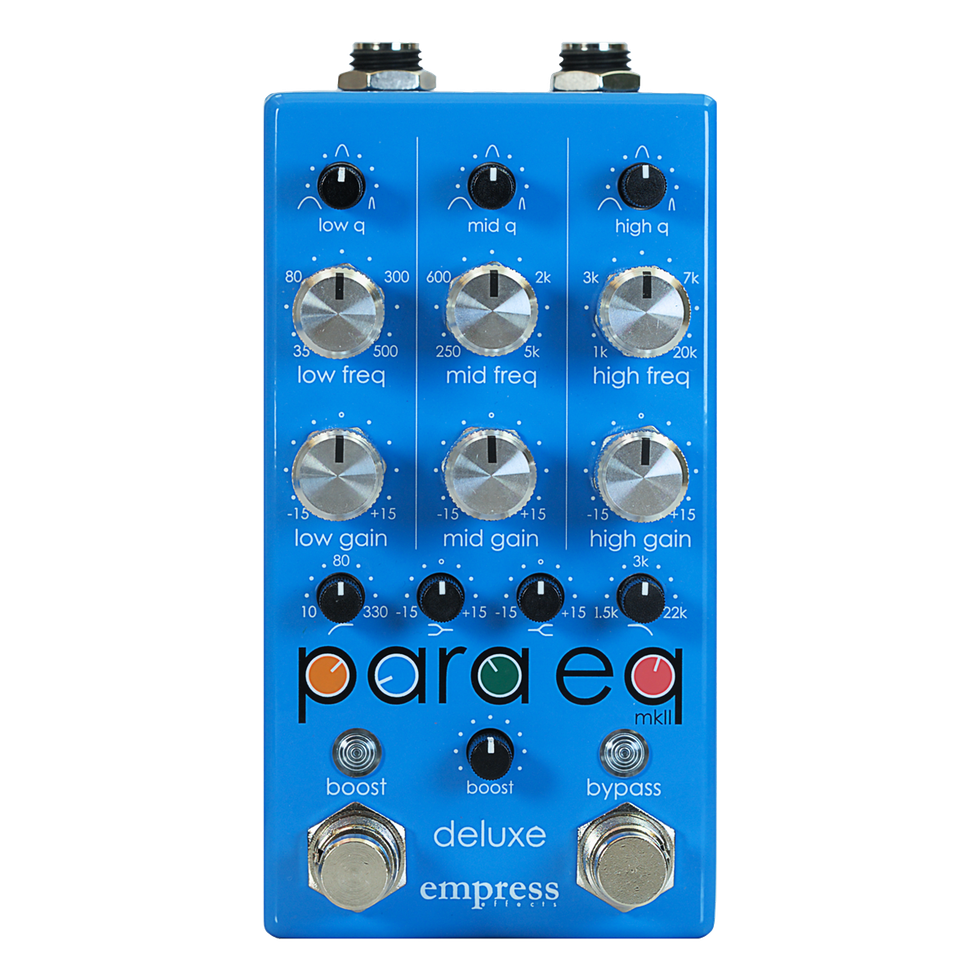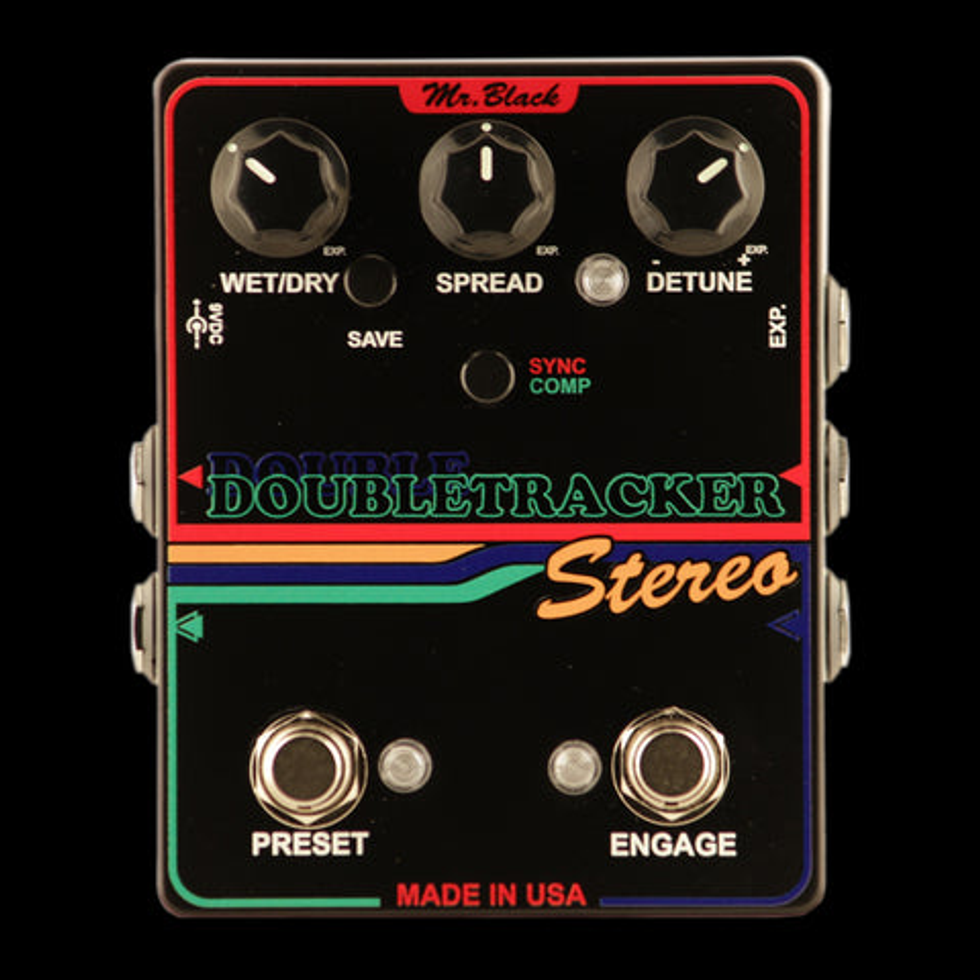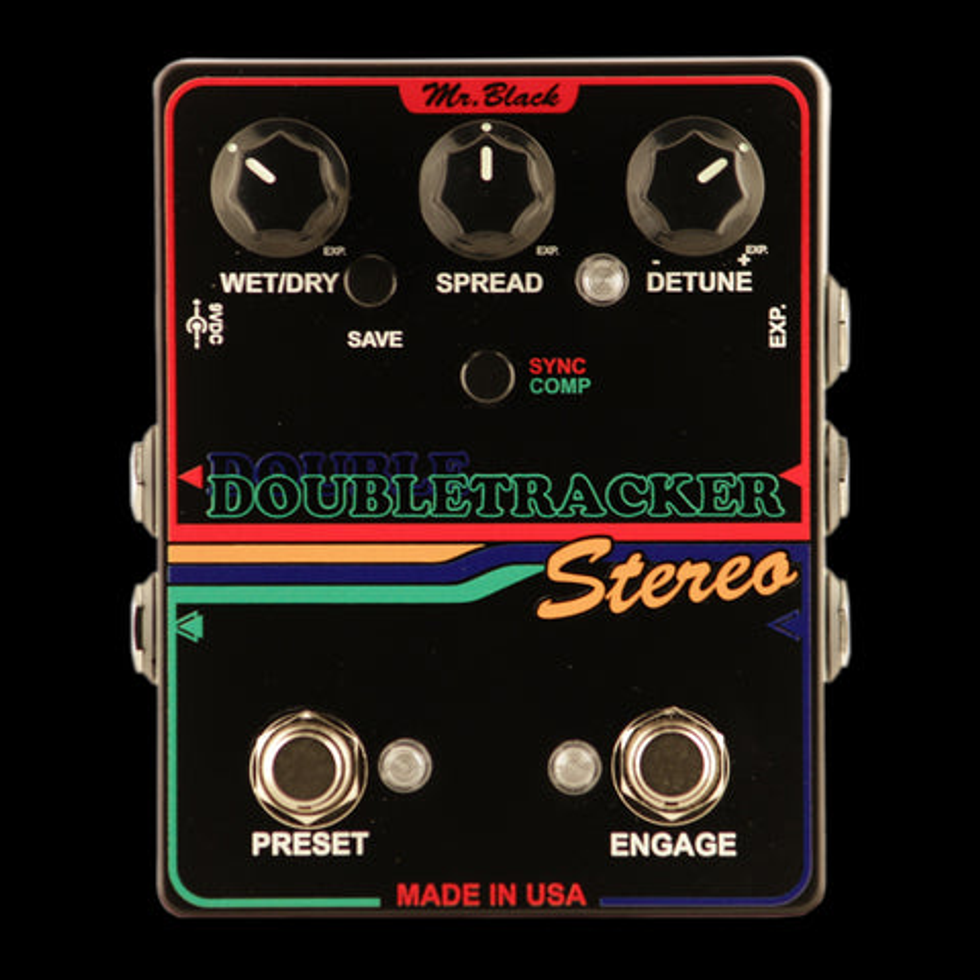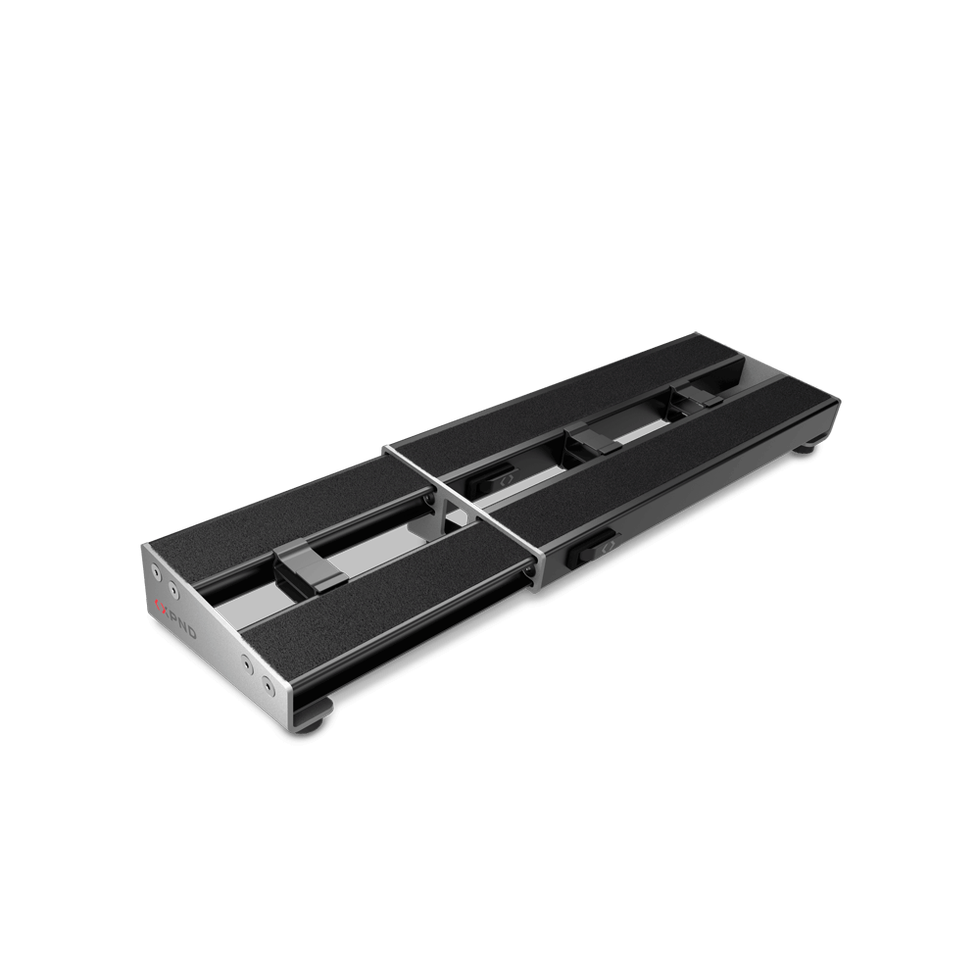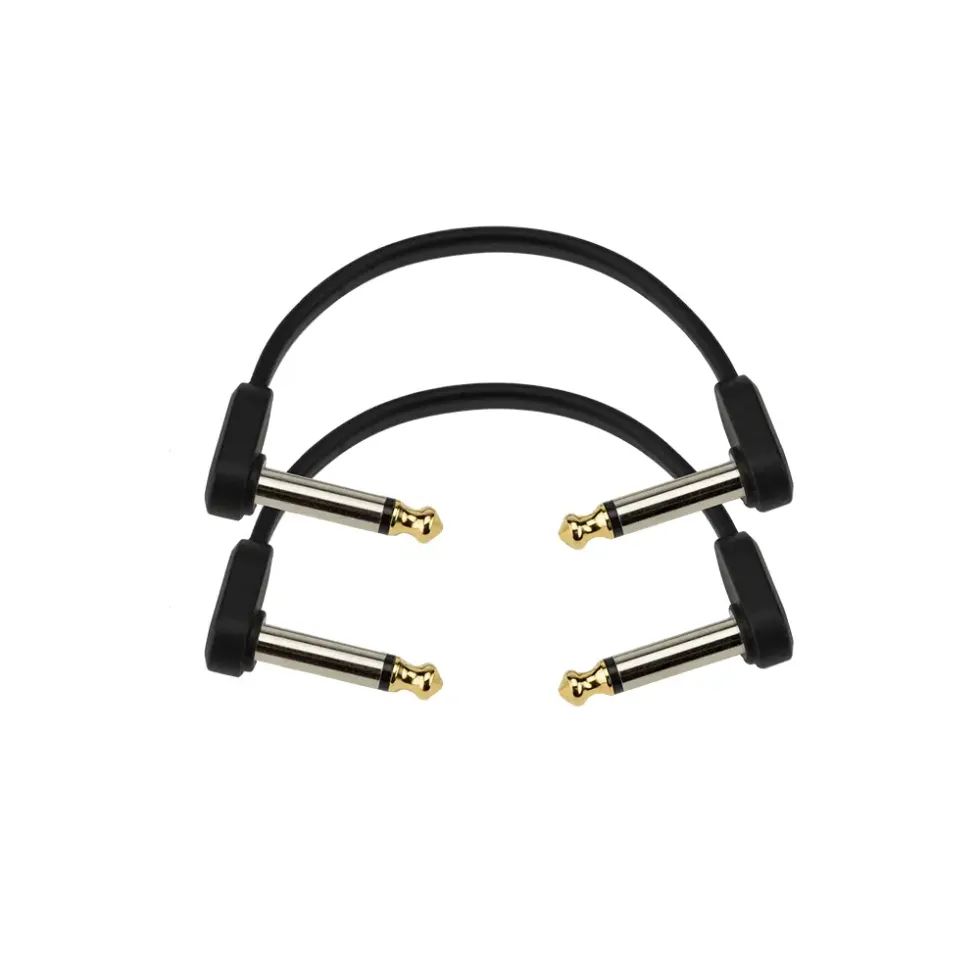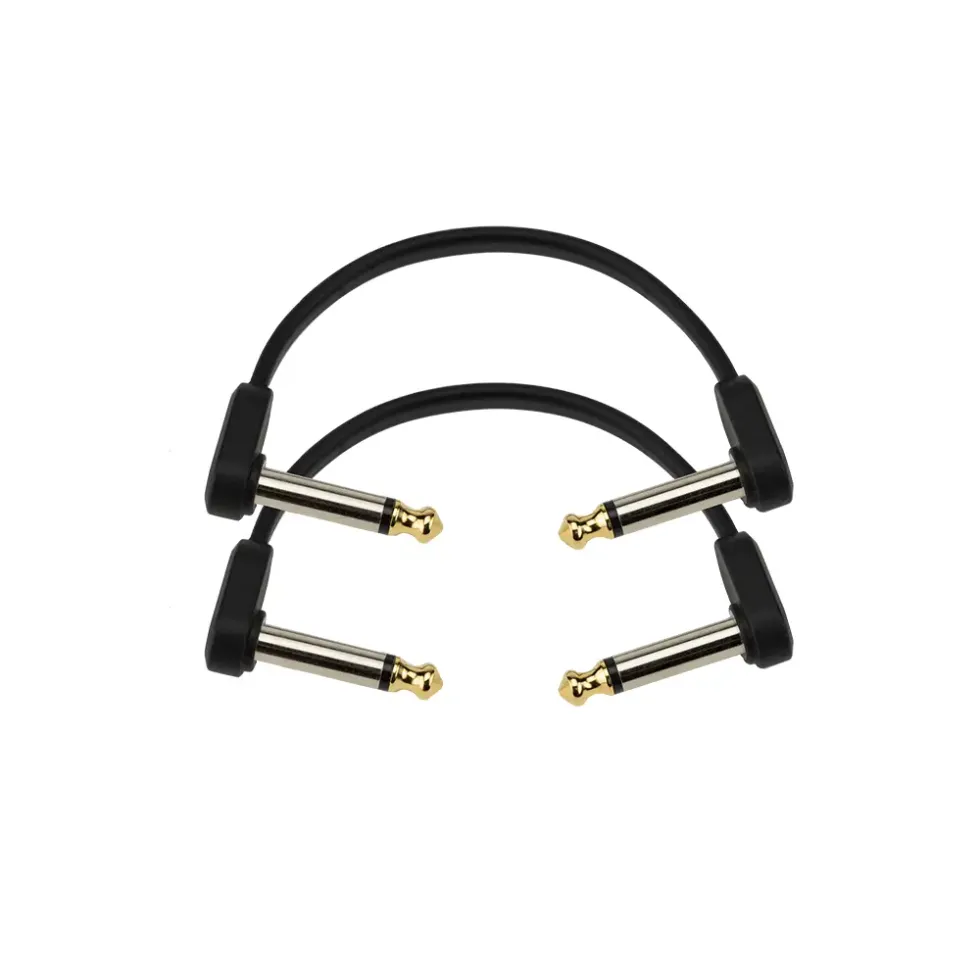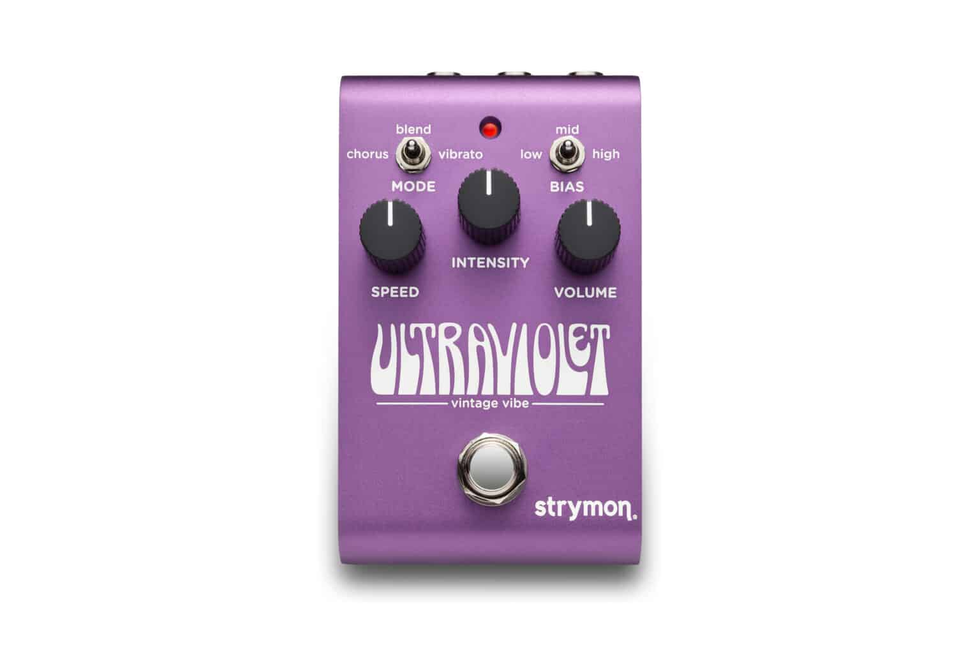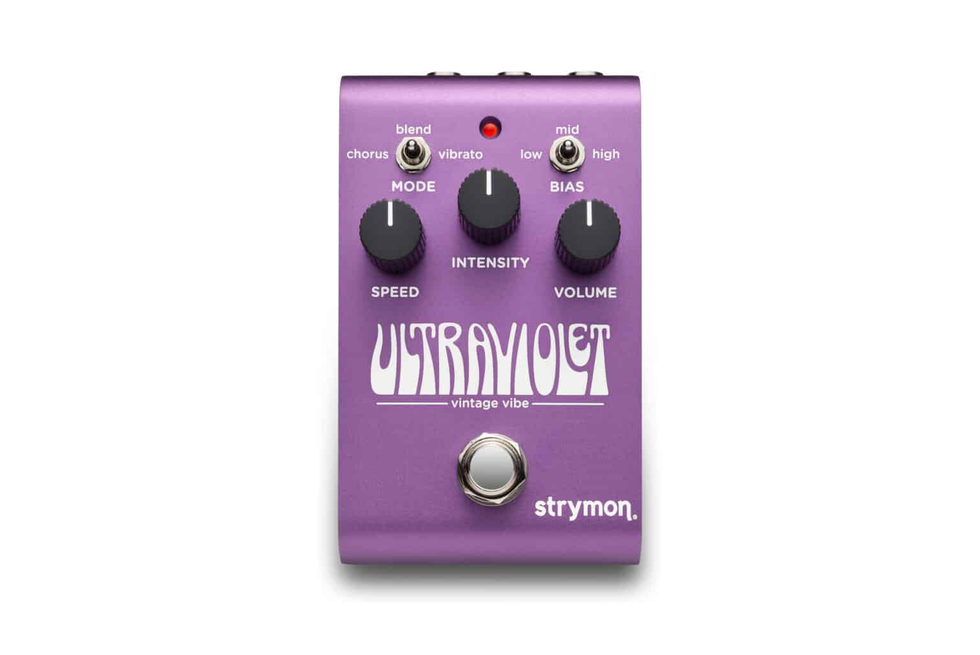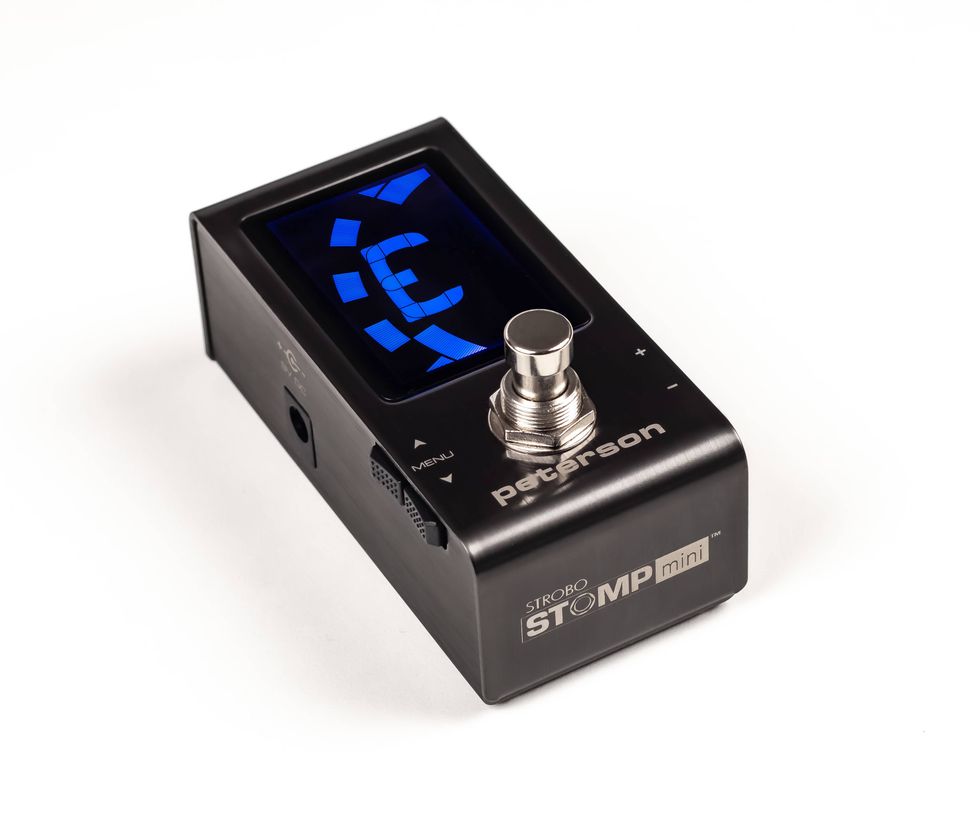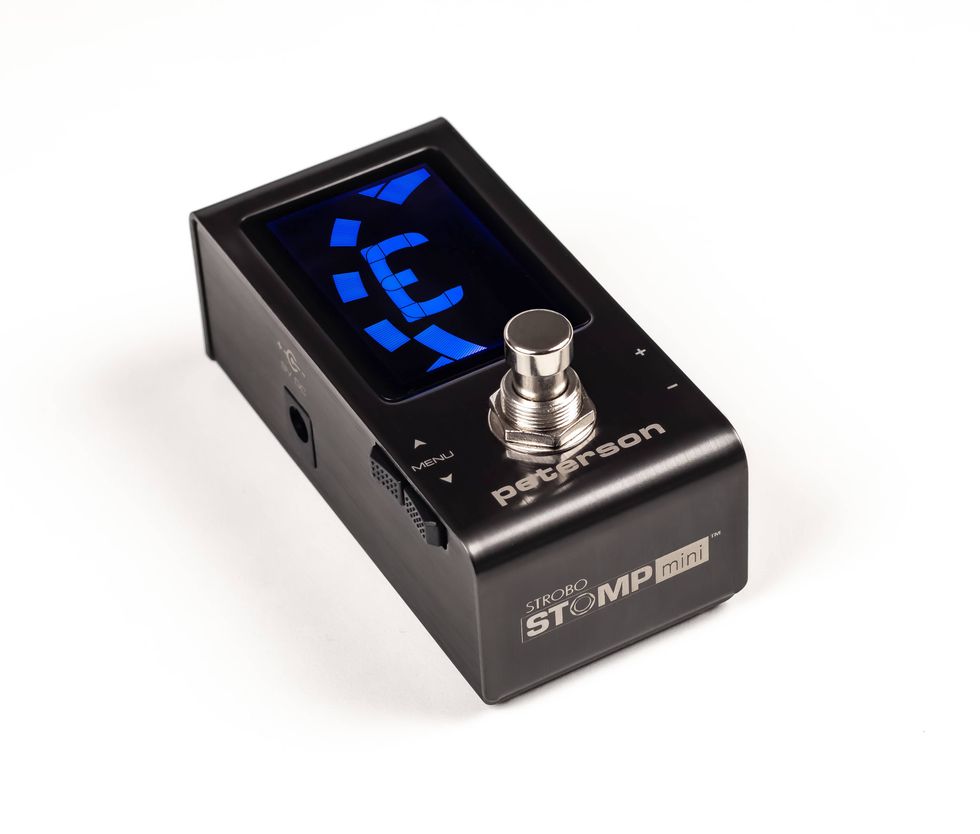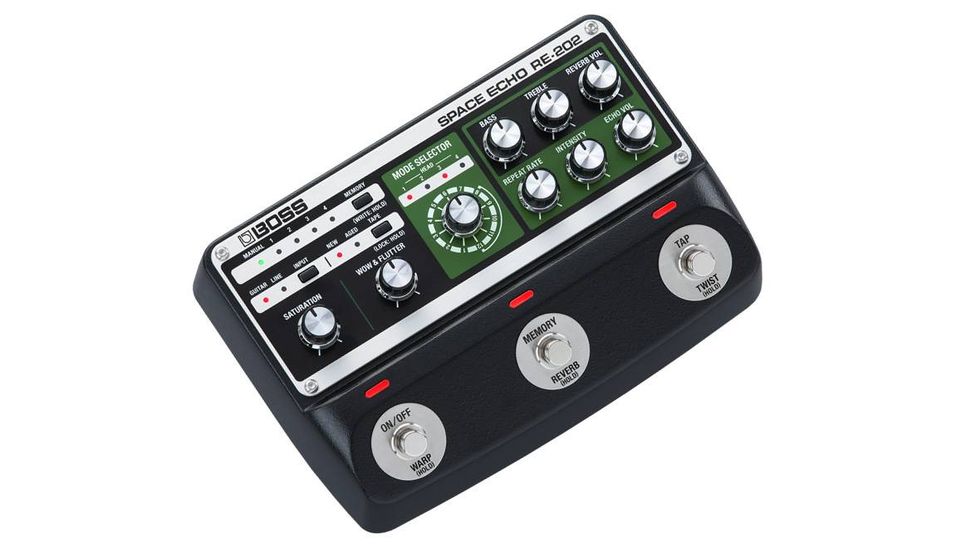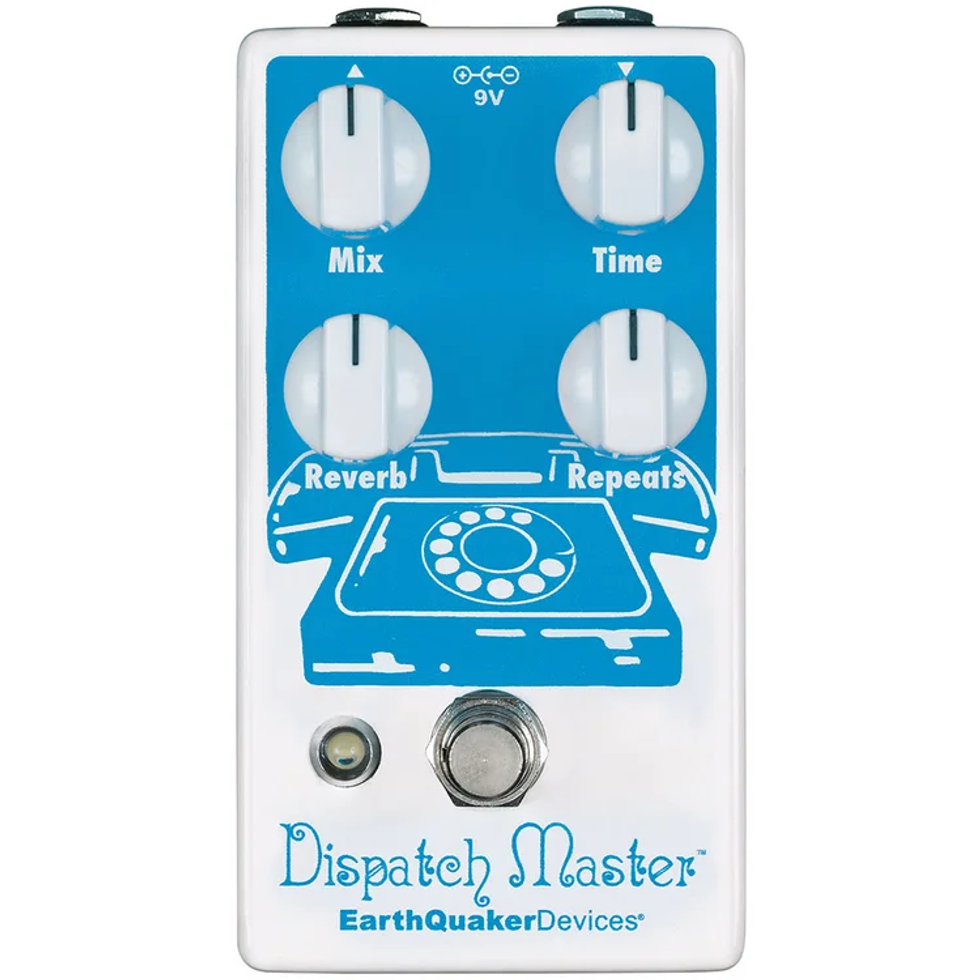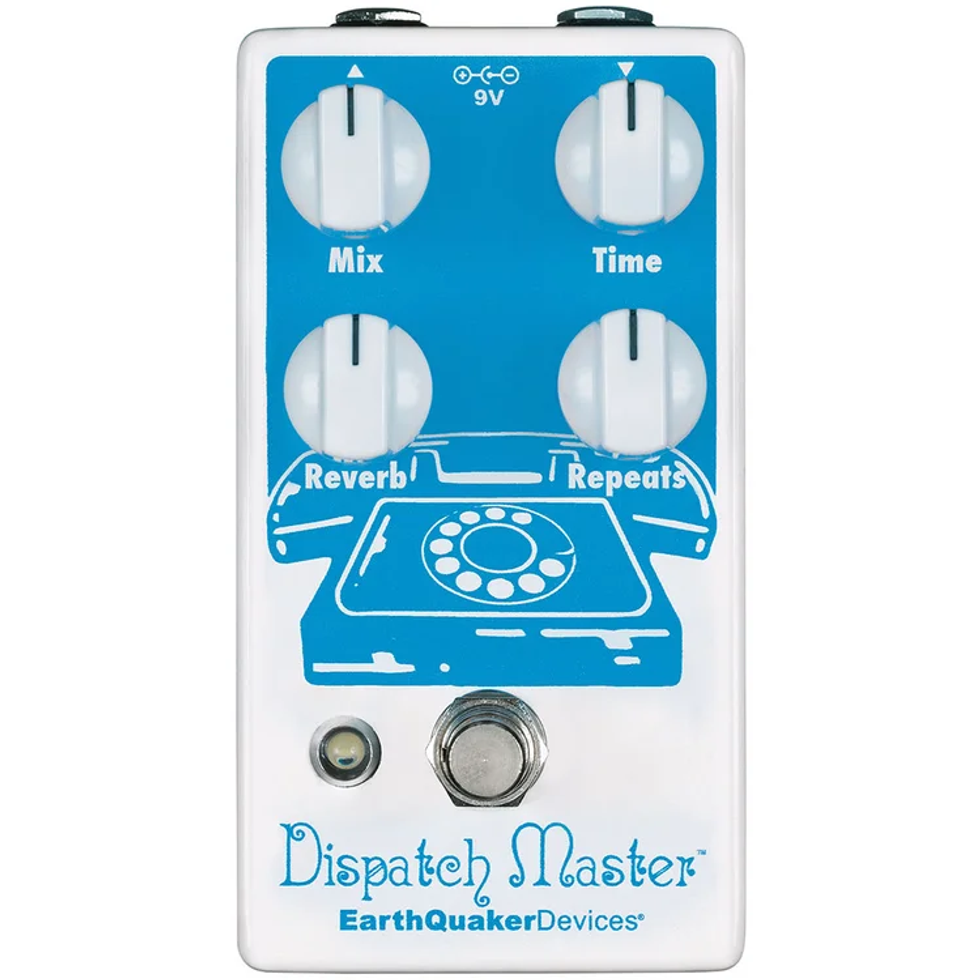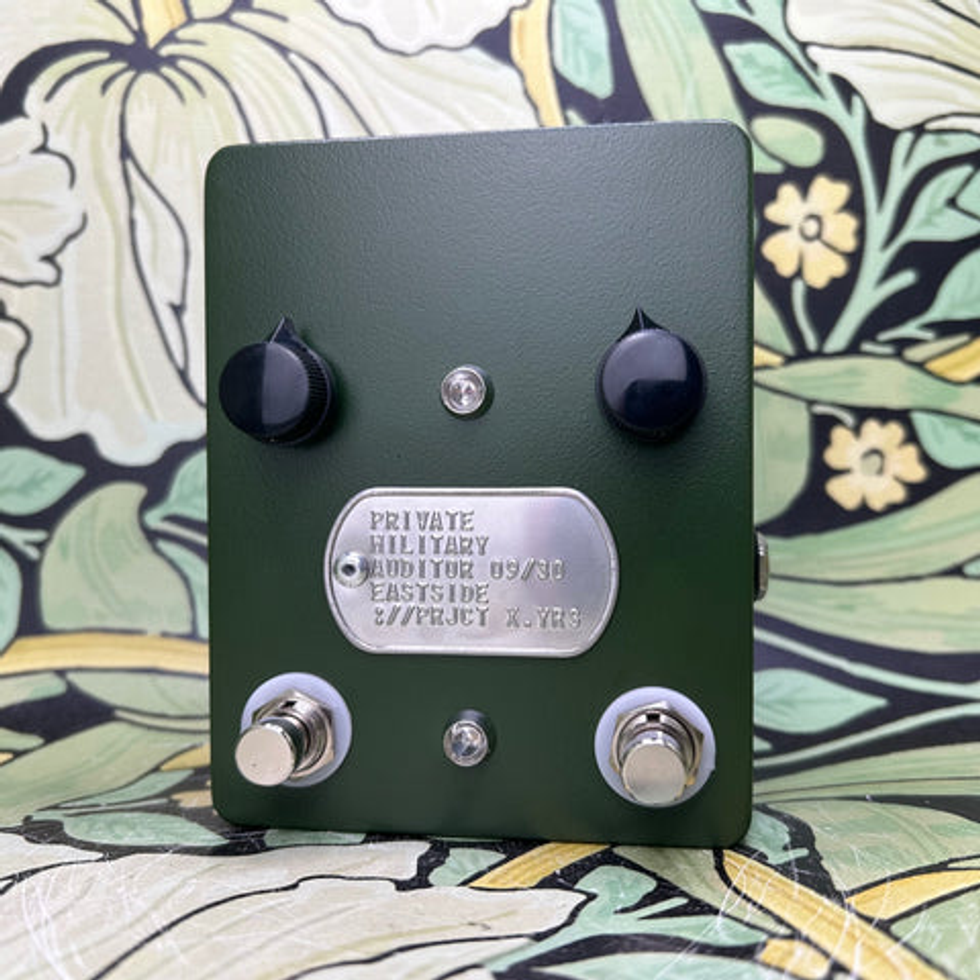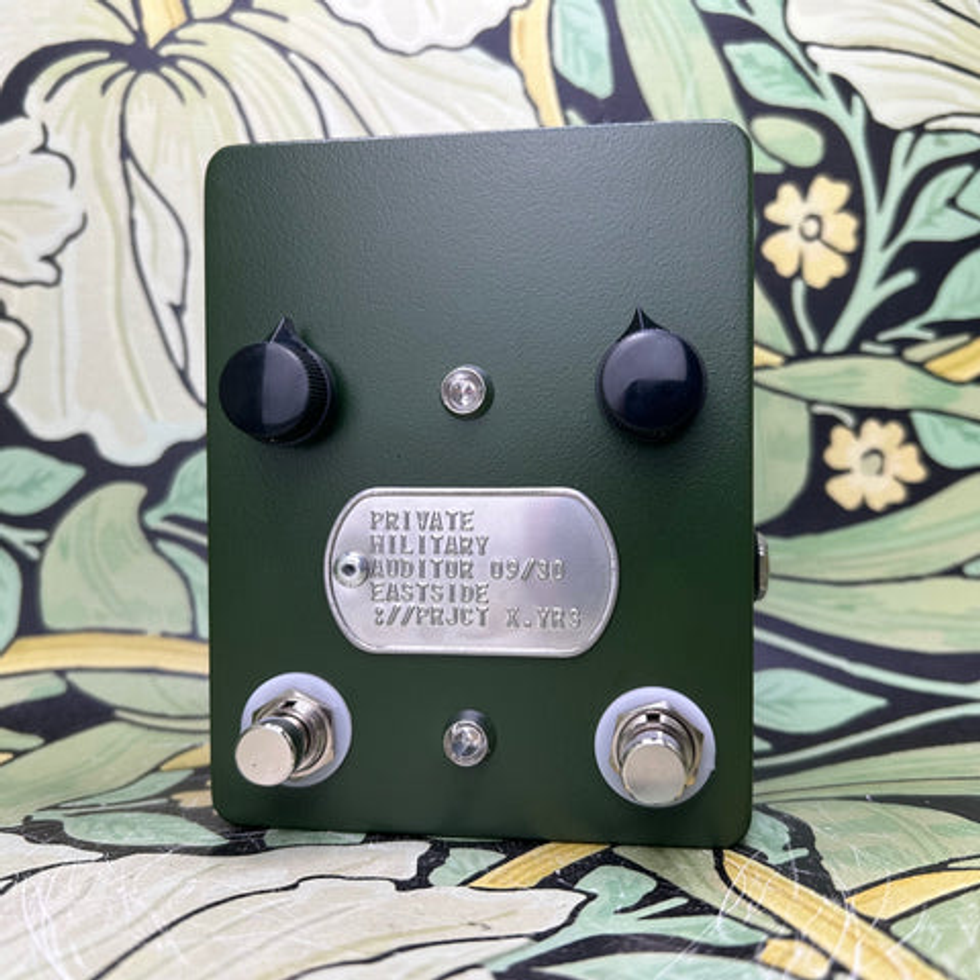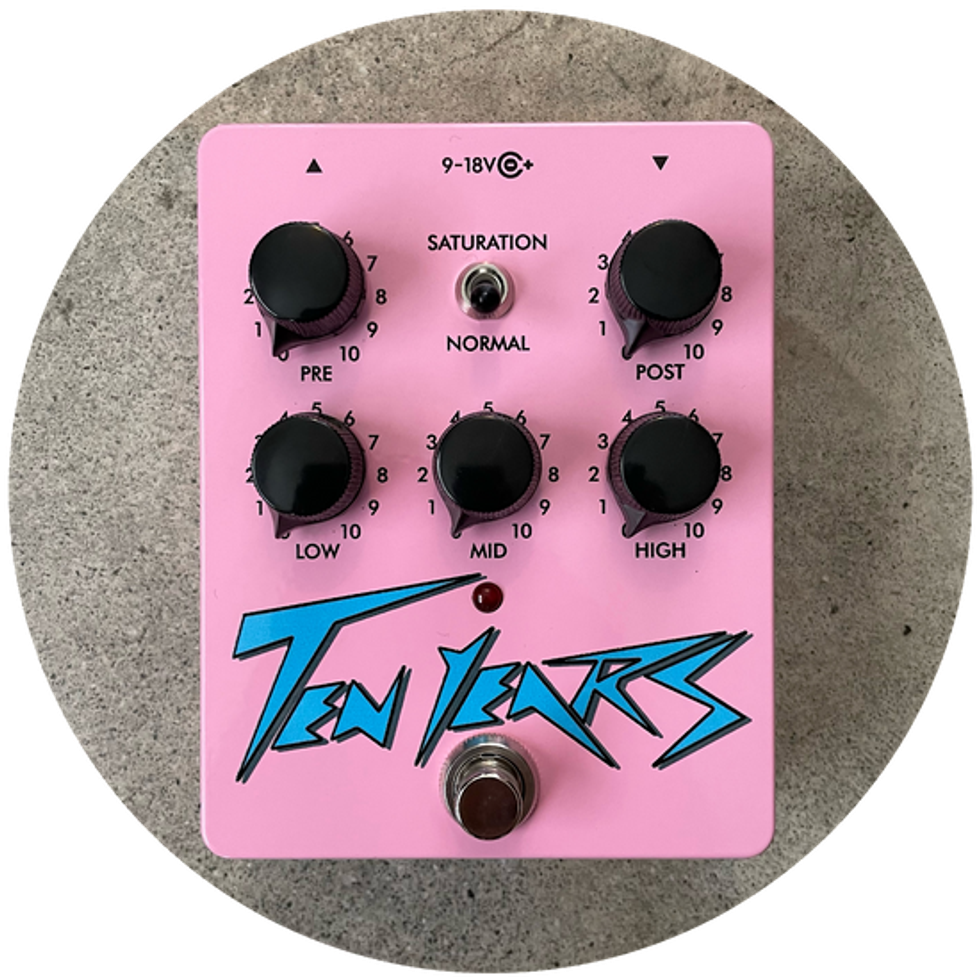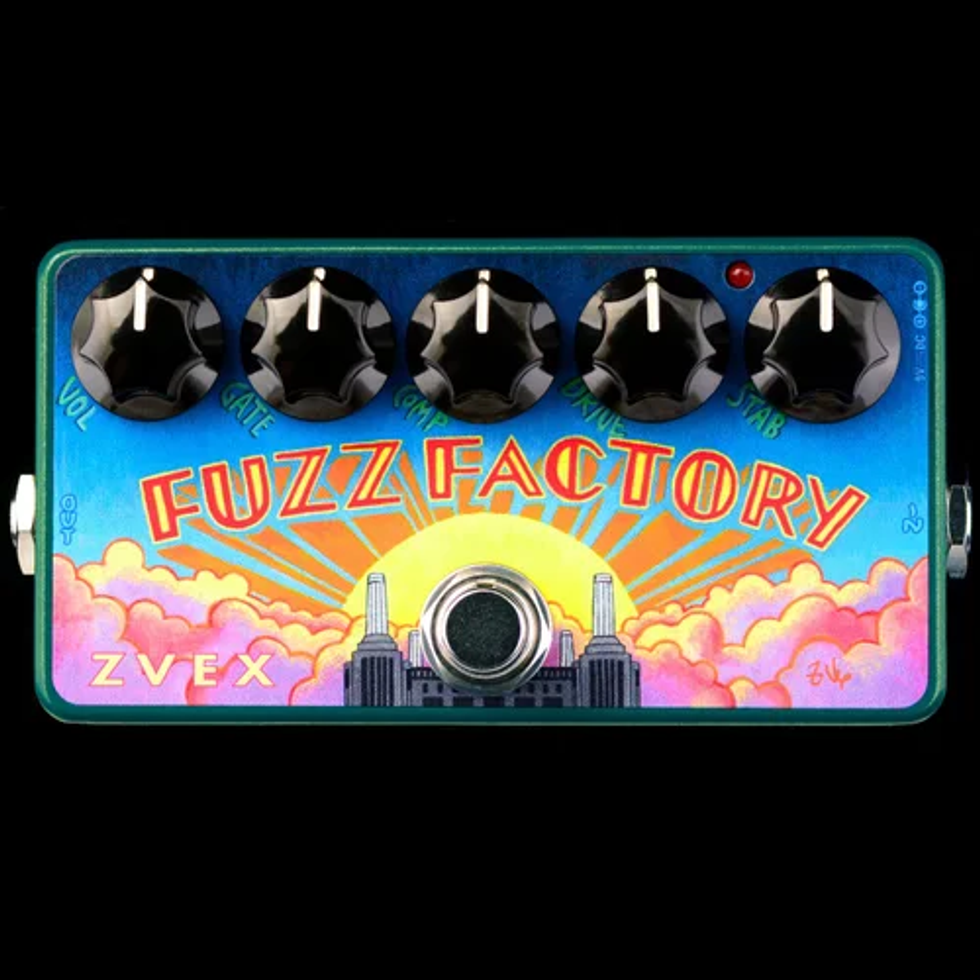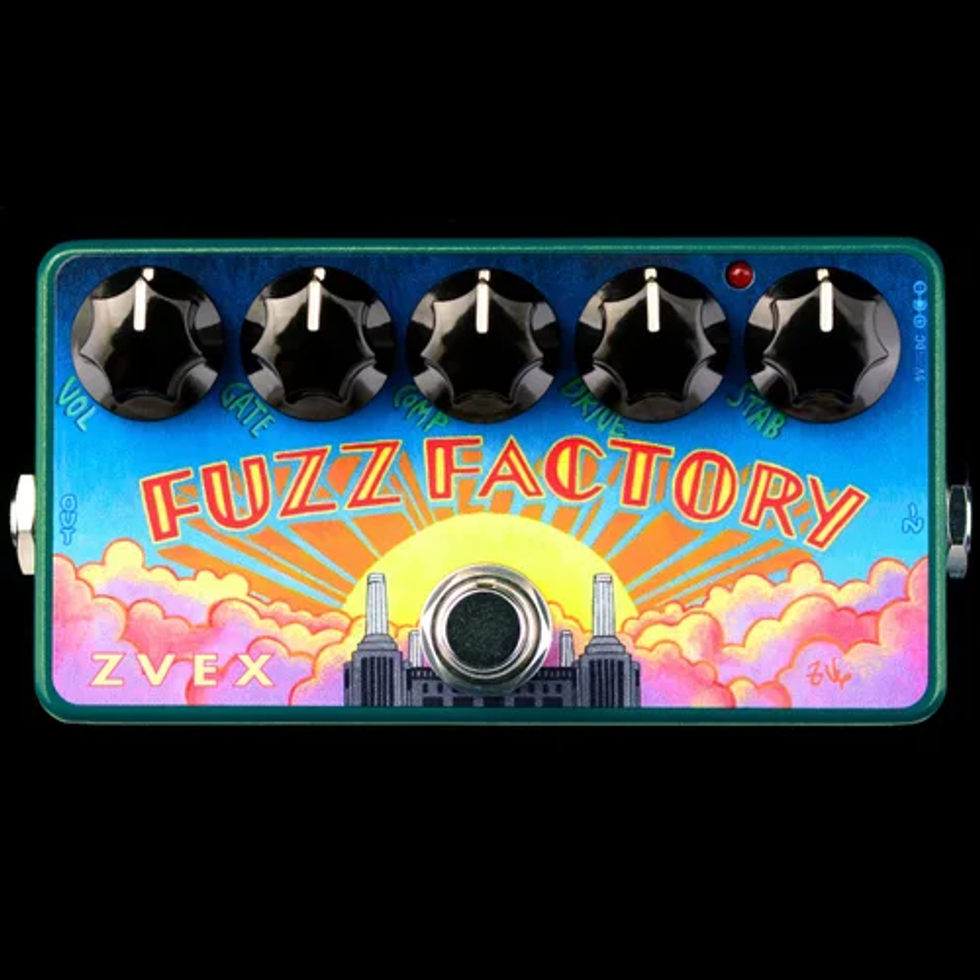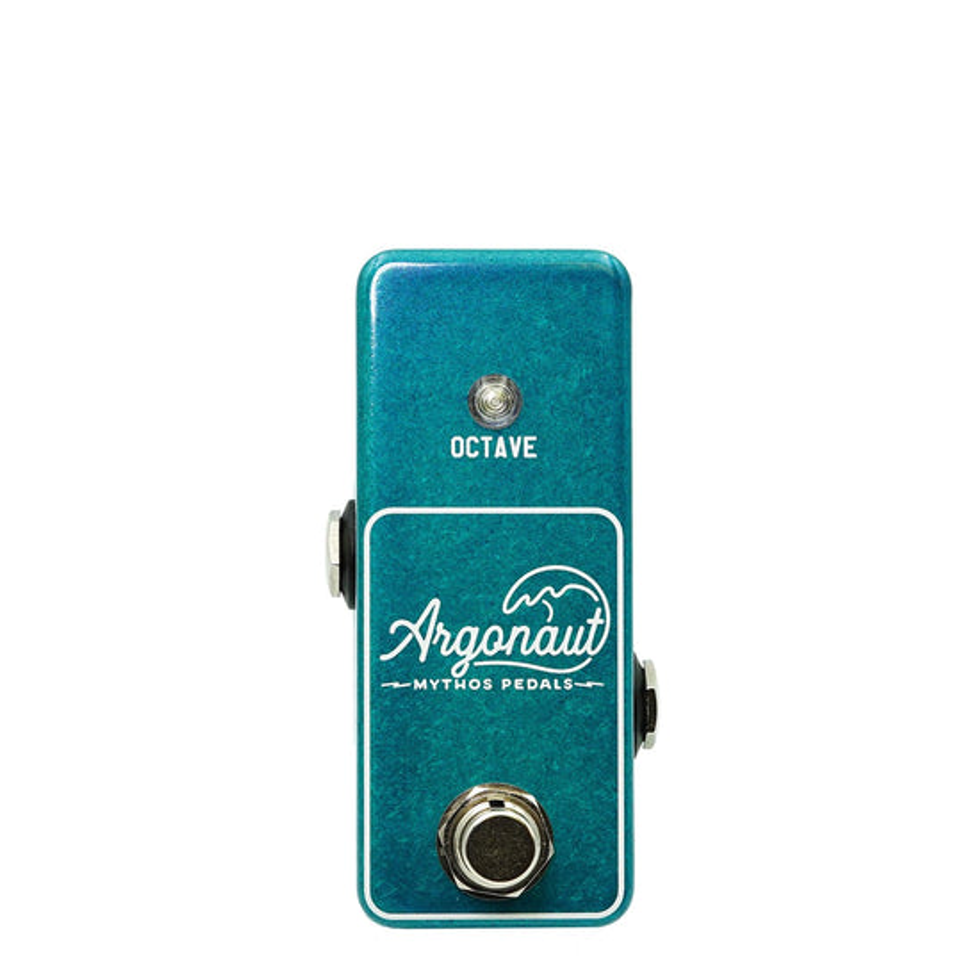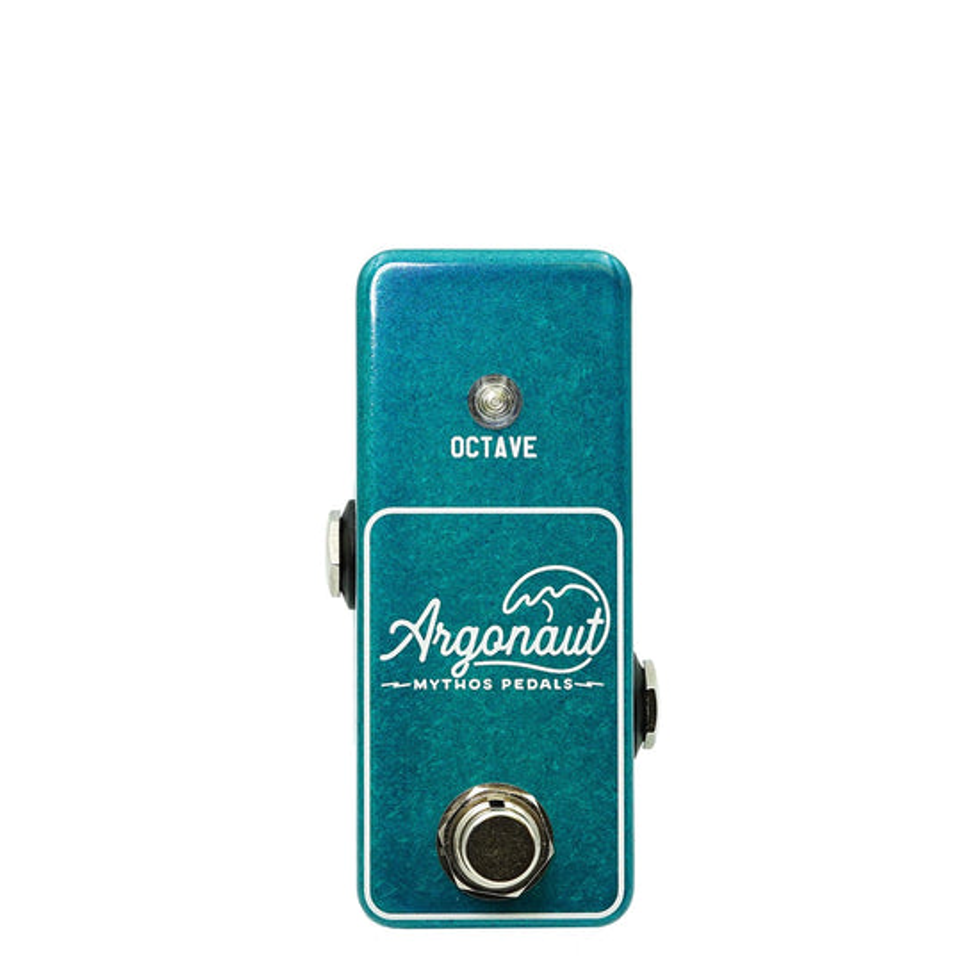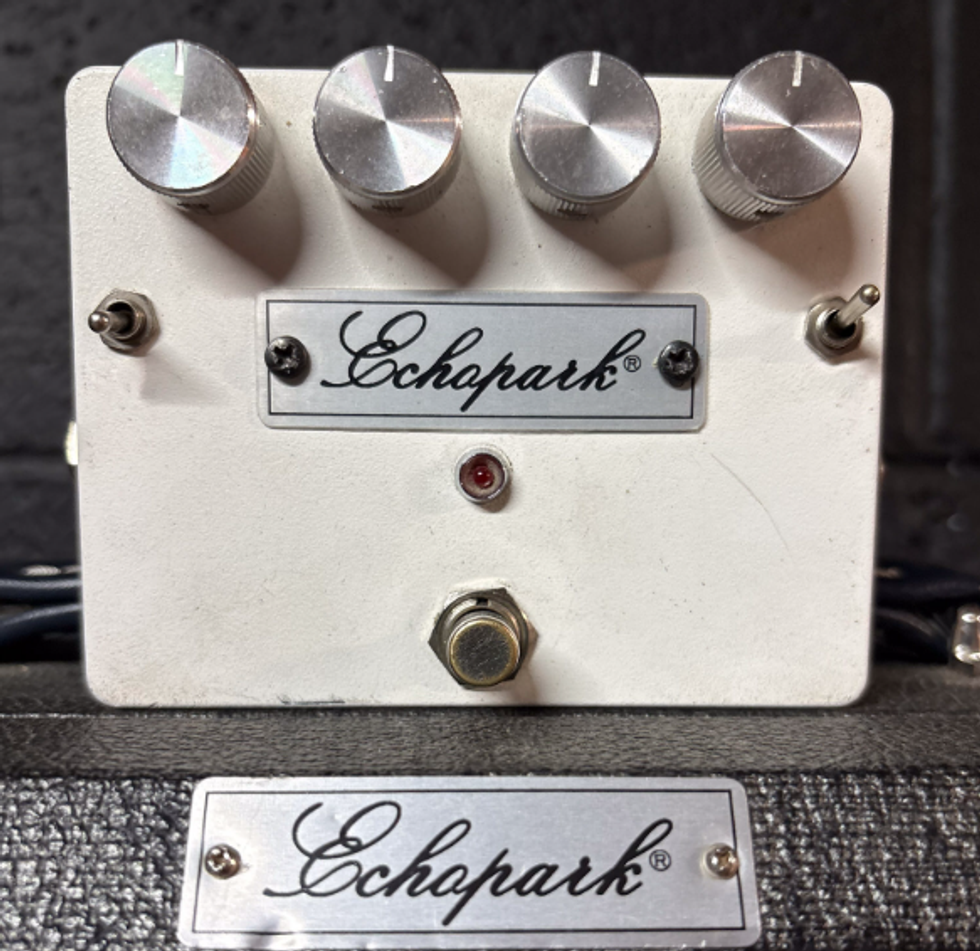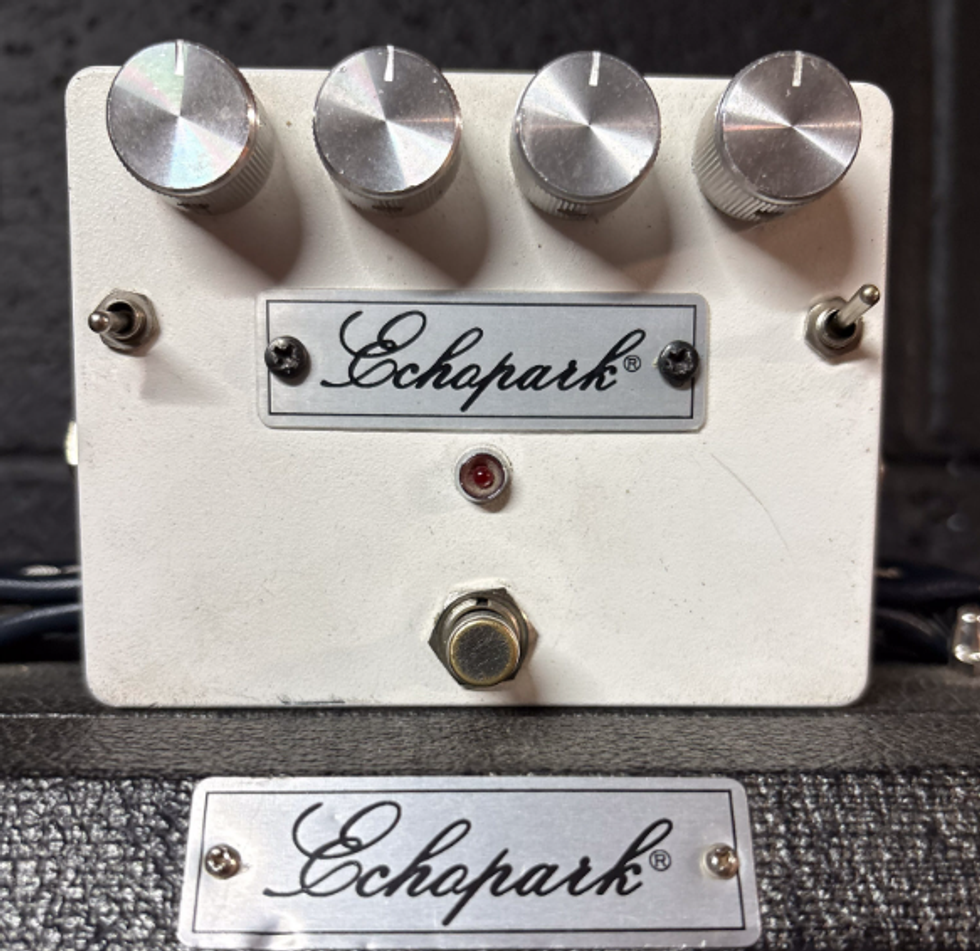First designed by one S. Tamura in the late '70s, the Ibanez Tube Screamer is arguably the most beloved of overdrive pedals. It's been rocked by guitar greats as diverse as Eric Johnson, Trey Anastasio, and Brad Paisley, and some would go as far as saying no single pedal has had a greater impact on musical expression or played as important a role in the development of effects modification.
The essence of the Tube Screamer's appeal—what multitudes of similar designs that it has inspired over the years aim to capture—are the subtly pleasing qualities it induces as it interacts with a tube amp: As you increase the amplitude of an input signal to overload a tube amp's preamp, it distorts the signal in a way that adds sustain, edge, and harmonic liveliness, while preserving the innate tonal characteristics of the guitar and amp—and without obscuring the player's dynamics. For the Tube Screamer, the design goal was to distort the signal symmetrically, not asymmetrically like a vacuum tube does.
Humble Beginnings
Stompboxes emerged as the guitarist's tone-warping tool of choice in the wake of the guitar mania fueled by British Invasion bands like the Stones, the Beatles, and the Kinks in the mid 1960s, and then Hendrix, Beck, and Cream toward the end of that decade. Though these bands predominantly relied on tube amps for classic tones, the new sounds they injected into their signal paths via pedals were made possible by the 1948 invention of the transistor. Pedals quickly became one of the most cost-effective, convenient, and instantaneous ways to generate the exciting new sounds that shaped rock 'n' roll—and modern culture by extension. By the late '60s, the market was flooded with portable sound-modifying devices, and effects became commonplace in pop music. Sonic expression was forever changed.
TS808 (1979-1981)
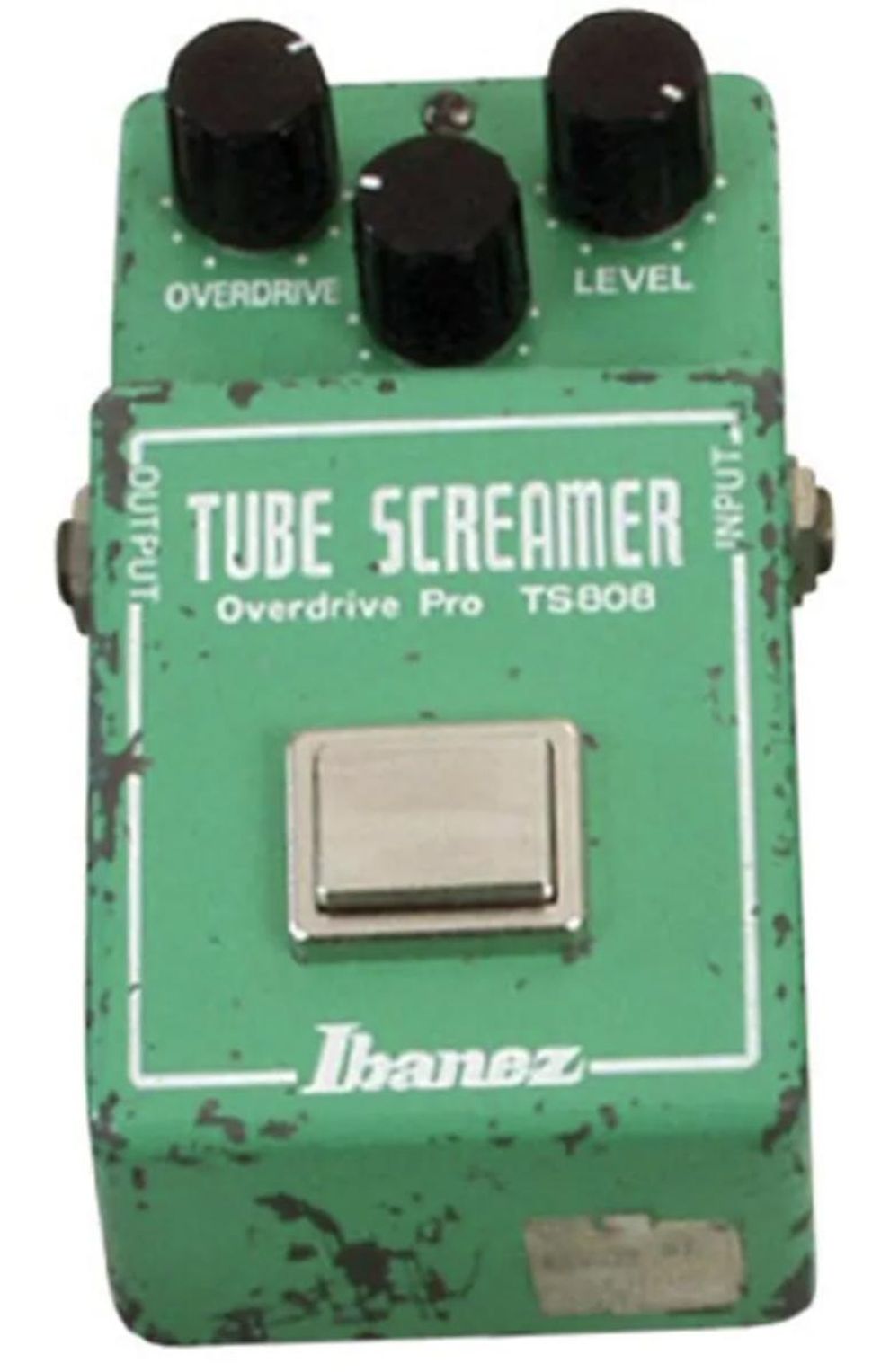
Series: Top Ten
Knob Configuration: Overdrive, Tone, Level
Notes: First Tube screamer. Considered by some to be the holy grail of overdrives.
Country of Origin: Japan
Ibanez and its parent company, Hoshino, were infamous in the late '60s and early '70s for their Fender, Gibson, and Rickenbacker knockoffs. Unsurprisingly, it also added effects pedals to its lineup by the mid '70s. These pedals were actually manufactured by Nisshin, a Japanese company that produced pickups for some Ibanez guitars. In a curious business arrangement, Nisshin was allowed to market its own line of effects, which were identical to those it made for Ibanez, and they were sold under the Maxon brand name. By the late '70s, Nisshin was developing the first Tube Screamer—the famed TS808 that debuted in 1979 and that was later popularized by Stevie Ray Vaughan, among others. According to former Ibanez product manager John Lomas, when the Tube Screamer was created, Roland—a major Japanese competitor—was producing the Boss OD-1 OverDrive and already had a patent on solid-state asymmetrical clipping. This prompted Nisshin to use symmetrical clipping in the Tube Screamer.
"If you look at the schematic between a Tube Screamer and a Boss OD-1, they're almost exactly the same thing," Lomas says. "The OD-1, though, is what they call an asymmetrical clipper. When you put a signal in it, it does not distort the top and bottom of the soundwave the same. Instead, it distorts one differently—the way a tube would. The original Boss OverDrive was designed to be a tube simulator, which was really big back then because, of course, most amplifiers were starting to get away from tubes. They were solid-state, and they really sounded like shit. So there was a market for tube-simulation pedals. I believe that's probably why the Tube Screamer was named the Tube Screamer."
The TS808 also differed from the OD-1 in that it had a Tone control, featured a common JRC 4558D integrated circuit (IC) chip, and had a small rectangular footswitch. "The Tube Screamer was really the first pedal I saw that had an IC in it," says Lomas. "All the overdrives prior to the Tube Screamer were built around transistors." Lomas contends that the sweet, vocal midrange sound the TS808 is known for has everything to do with that JRC4558D IC chip—which explains why Lomas and many other overdrive aficionados prefer the sound of the original over other permutations of the pedal that have emerged over the years.
The TS Hits Its Stride — TS9 (1982-1984)
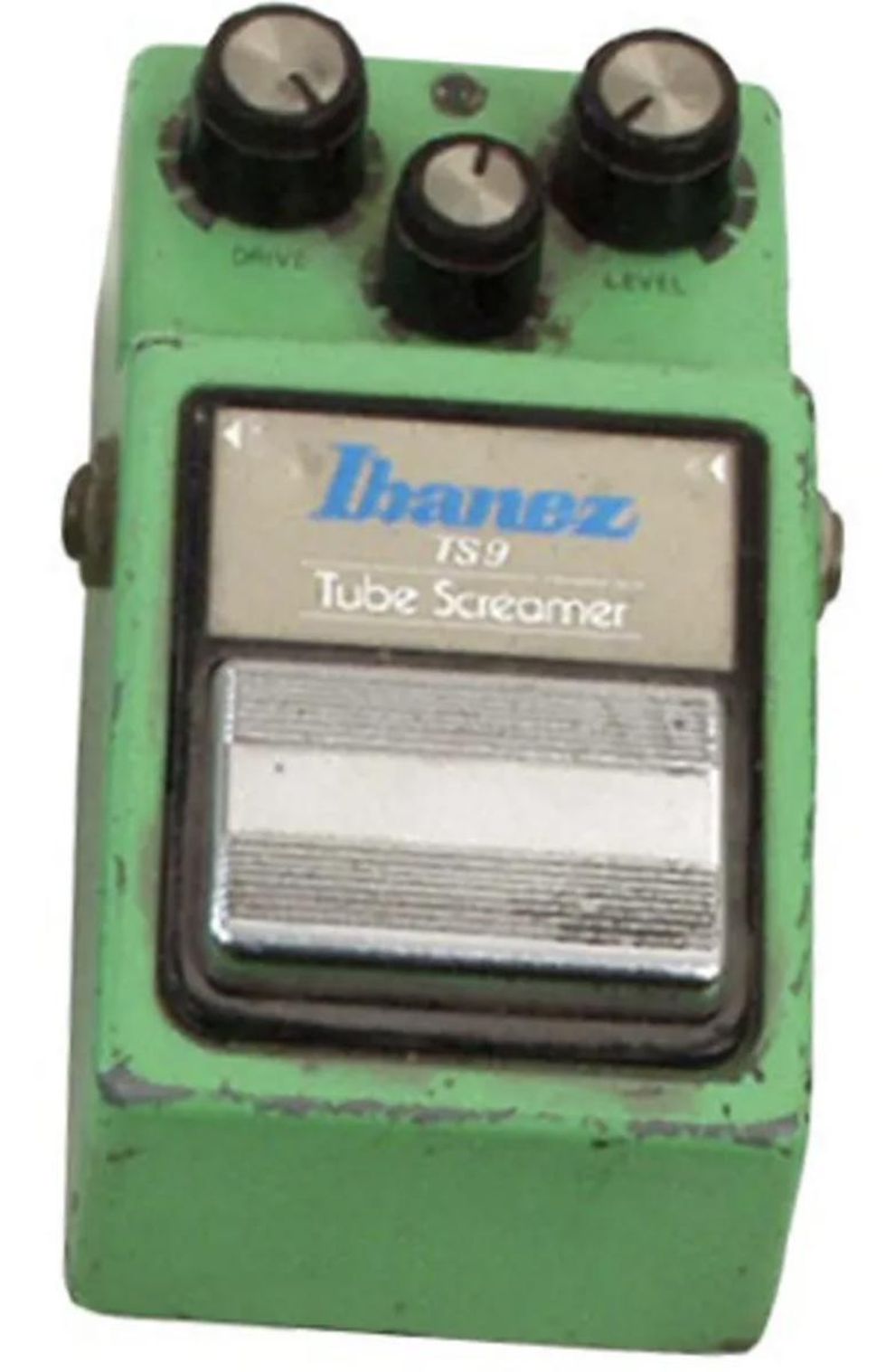
Series: 9 Series
Knob Configuration: Overdrive, Tone, Level
Notes: Same basic configuration as TS808 but with a bigger footswitch and 9V AC operation.
Country of Origin: Japan
Despite the popularity and Holy Grail status attained by the original TS808, the Tube Screamer wasn't left alone—and plenty of pedal lovers are glad. Perhaps the most popular of all Tube Screamers, the TS9 replaced the TS808 in 1982 with the introduction of the 9 Series. The TS9 was slightly brighter and a little less smooth sounding than the 808. The two were almost identical internally, apart from the TS9's expanded output. The footswitch got bigger, too. Nine Series pedals had a footswitch that took up approximately a third of the pedal—a move clearly intended to compete with the easy-to-stomp design of Boss pedals. However, one drawback of the new Tube Screamer, according to Lomas, was that TS9s were built with a somewhat random sourcing of parts—basically whatever was readily available at the time of manufacture. This resulted in TS9s that varied widely in tone from batch to batch.
"[The introduction of the TS9] was not a magical moment by any stretch of the imagination," Lomas says. "The public didn't give a rat's ass—not for the longest time. It caught on much later. I would say guys really started talking about it in the late '80s, and by 1990 it was really starting to roll along." Since there was little demand for the TS9 when it came out, it was out of production by 1985. Ibanez then released a new series of stompboxes, the Master Series, without a Tube Screamer in the lineup. Instead, it included the Super Tube STL—a 4-knob affair with a Tube Screamer circuit and a 2-band EQ. According to "Analog Mike" Piera—a noted stompbox expert whose company, Analog Man, began modifying Tube Screamers to original specs in the mid 1990s—the STL was similar to the rare (and very valuable) European ST-9 Super Tube Screamer that was never released in the US.
ST9 (1984)
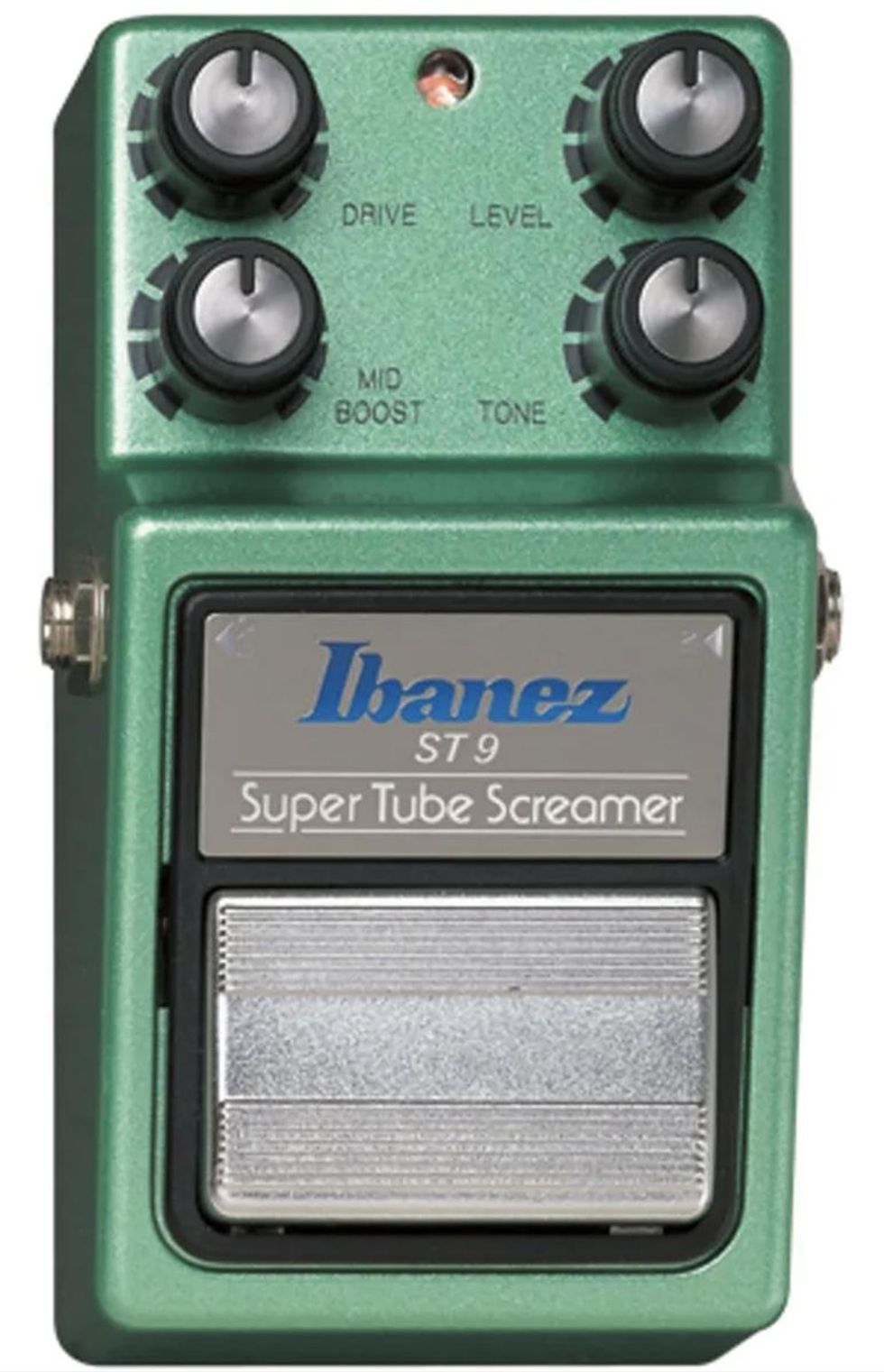
Series: 9 Series
Knob Configuration: Overdrive, Mid Boost, Tone, Level
Notes: Mid Boost control added. Breifly available in Europe but not in the US. Extremely rare.
Country of Origin: Japan
STL Super Tube (1985)
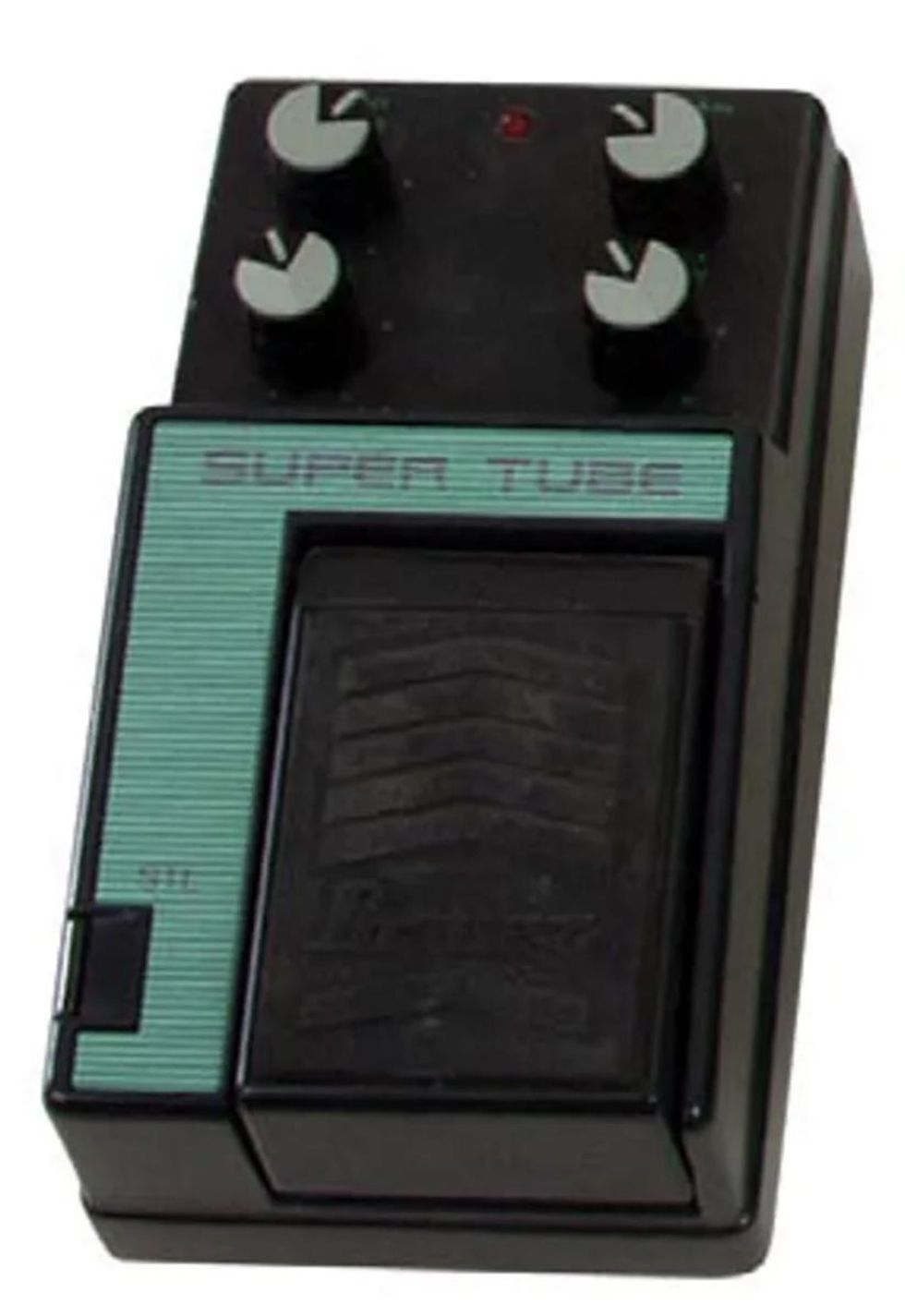
Series: Master/L
Knob Configuration: Overdrive, Level, Bite, Bright
Notes: Not officially a Tube screamer, but uses a Tube
Screamer circuit with a 2-band EQ.
Country of Origin: Japan
The Master Series only ran for one year, though—and the Tube Screamer wasn't M.I.A. for long. In 1986, Ibanez released the brightly colored Power Series (aka the 10 Series), which boasted a new, high-fidelity TS10 with quieter circuitry that eliminated the vexatious chirp that older Tube Screamers sometimes emitted when all the controls were turned up. However, these alterations affected the burgeoning star's signature tone, and the TS10 wasn't as well received as Hoshino hoped. Thanks to blues and blues-rock mavens like SRV, many players were getting hooked on the tones of TS808 and TS9 Tube Screamers.
TS10 (1986-1993)
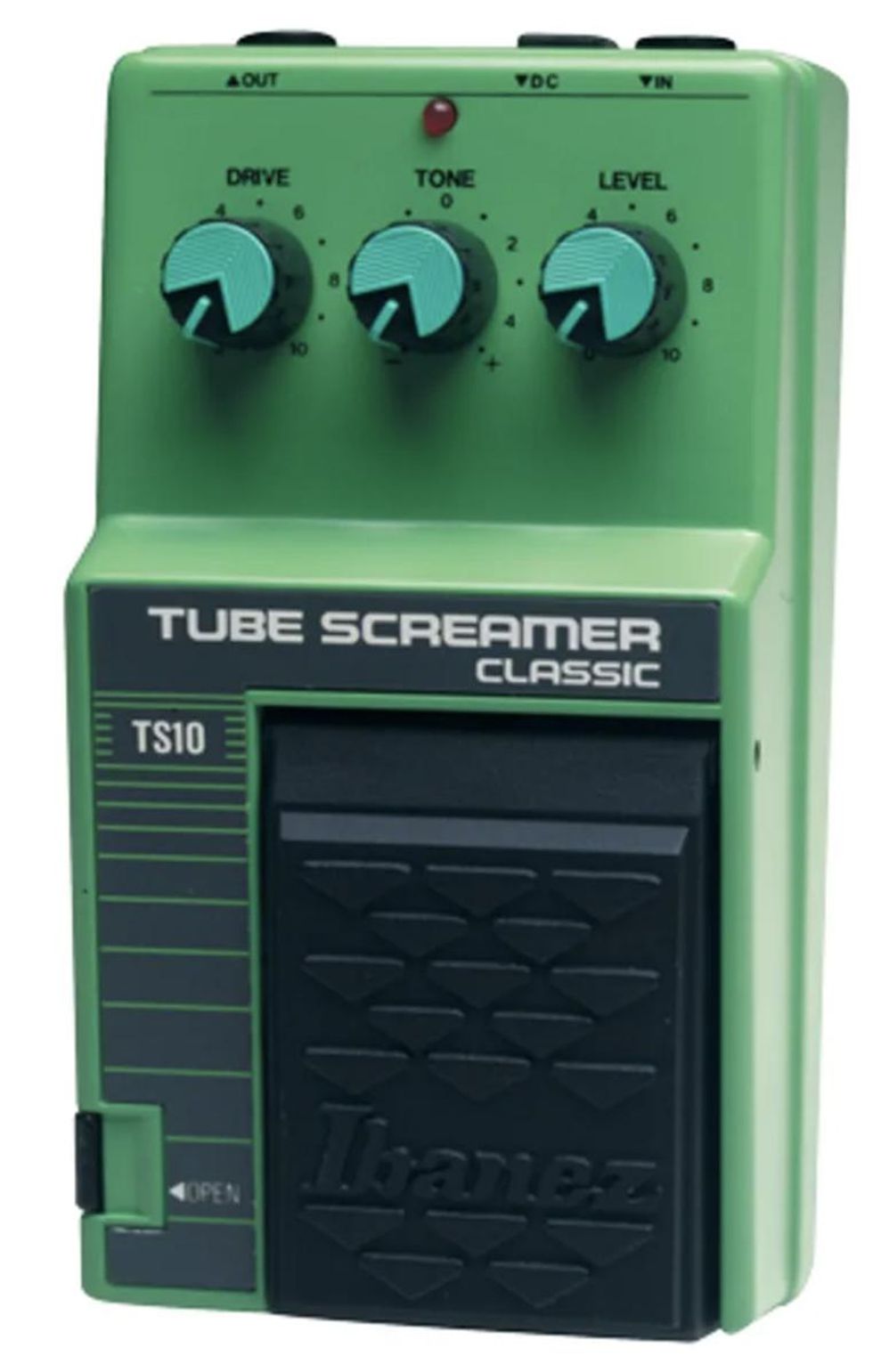
Series: Power/10 Series
Knob Configuration: Overdrive, Tone, Level
Notes: Changed cosmetically to match the 10 series. Was John Mayer's current Tube Screamer of choice.
Country of Origin: Taiwan
TS5 (1991-1998)
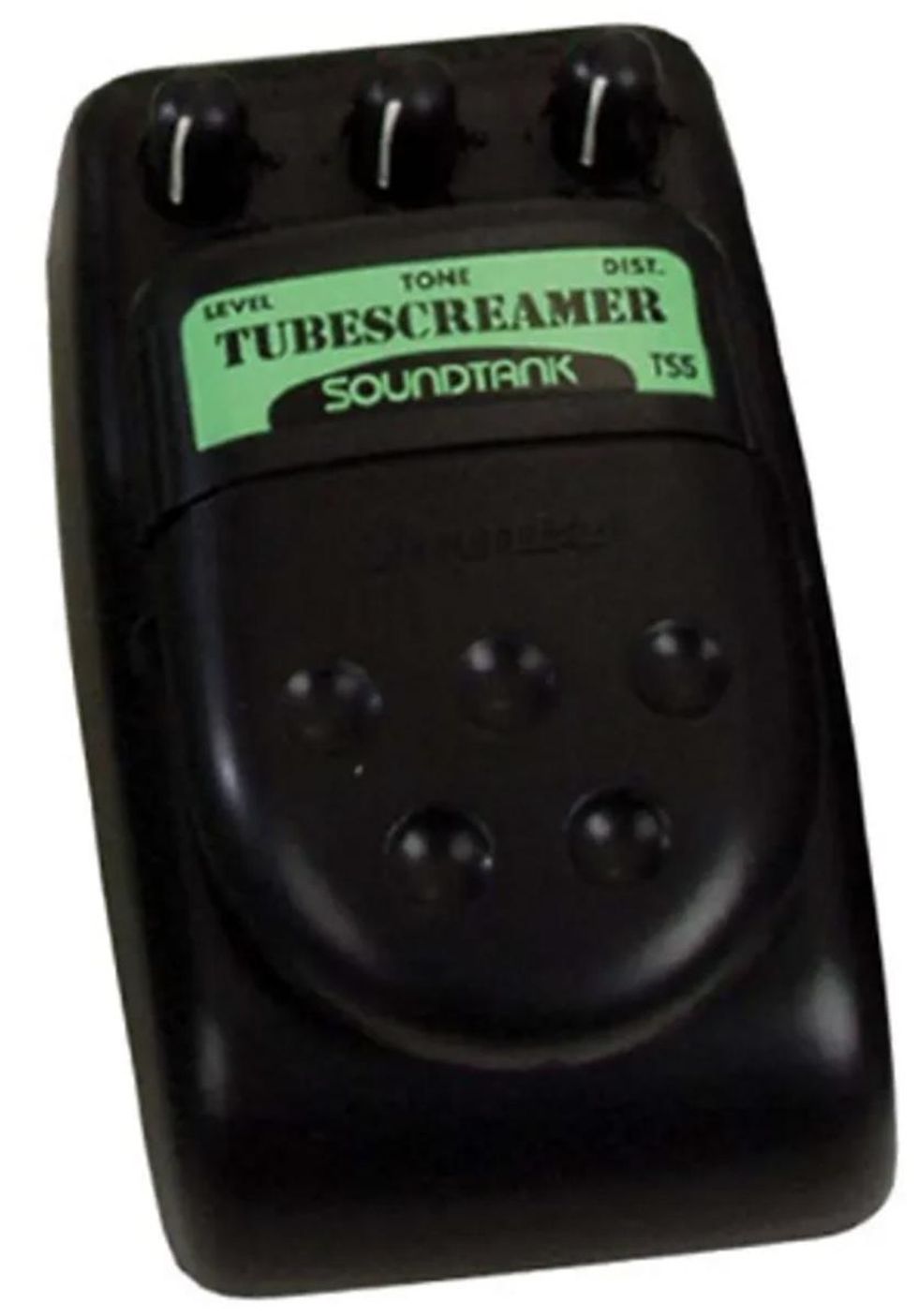
Series: Soundtank
Knob Configuration: Overdrive, Tone, Level
Notes: Changed cosmetically to match the Soundtank series of smaller, plastic pedals.
Country of Origin: Taiwan
Piera says that, until the recent use of TS10s by players such as John Mayer, TS10s had remained undesirable. "I still hate them," he says, calling it a "disposable" pedal. "They used cheap, proprietary parts— jacks, switches, and pots that often break and can't be replaced, because the sturdy parts used in handmade, handwired pedals like the TS9 won't fit. They have circuit boards that have all these parts mounted on them that break off, just so they could make pedals cheaply with machine soldering."
Lomas explains how the economy affected the quality of manufacturing during those years. "When I first joined the company," says Lomas, "back around '83 or '84, it was, like, 260 yen to the dollar. Today, it's around 77 or 78. Back around '85, the yen started a turnaround and was coming down to about 150, 160—and they [Hoshino] were crapping their pants. They used to be able to take anything that was made in Japan and throw it out on the US market and make money because it was good quality and the exchange rate was very favorable for the yen. Then, suddenly, they had to start worrying about making things cost effectively."
When Ibanez launched its Soundtank effects line in 1991, the new TS5 Tube Screamer's design goal was to capture the sound of the older, vintage units at cheaper costs by using streamlined manufacturing techniques. The TS5 was not handwired like the TS9 and TS808, and it was eventually sold in a high-impact plastic case, rather than the original metal casing. The TS5's circuit is comparable to the TS9, but it was made by Taiwan-based manufacturer Daphon rather than Nisshin, and it featured smaller, cheaper components.
Rebirth of a Classic
Perhaps the resurrection of the TS9 was inevitable, but Lomas contributed to its legacy first by insisting on the 1992 reissue of the TS9, and then by developing the TS9DX Turbo Tube Screamer. He says when he took over product development in 1990, he immediately started pushing for a TS9 reissue. Used TS9s were selling in stores for well over $250, when Ibanez itself was selling used units to dealers for five bucks. Lomas says management was wary. Nisshin wanted to move toward digital technology and had no interest in going "backward" to the old analog products—which is somewhat ironic, Lomas notes, considering that Nisshin is producing many of the older analog effects now. "At the time," he says, "they thought we were crazy."
But money often talks when words fall short. After prolonged browbeating, Nisshin started to see the dollar signs that had convinced Lomas, and they authorized the reissue. Lomas recalls how he and his colleagues spent weeks buying every original TS9 they could get their hands on in order to ensure that the pending reissue was an exact replica. As they cracked open and examined the pedals, they found that almost every one had a Toshiba TA75558 IC chip rather than the JRC chip commonly found in TS808s. "Since 90, 95 percent of TS9s had that chip," says Lomas, "that's what we decided to put back in it." He recalls with a hint of nostalgia the way the company boasted about the reissue when it finally came out—about how it was made in the same factory as the original. "It was even built by the same middle-aged ladies. It was a dead, nuts-on copy," he says. Even the manual was identical—dated 1981, for authenticity. More than 5,000 sold within weeks of the release, and Ibanez estimates it has sold 10,000–12,000 TS9 reissues each year over the last decade.
TS9 Reissue (1992-Present)
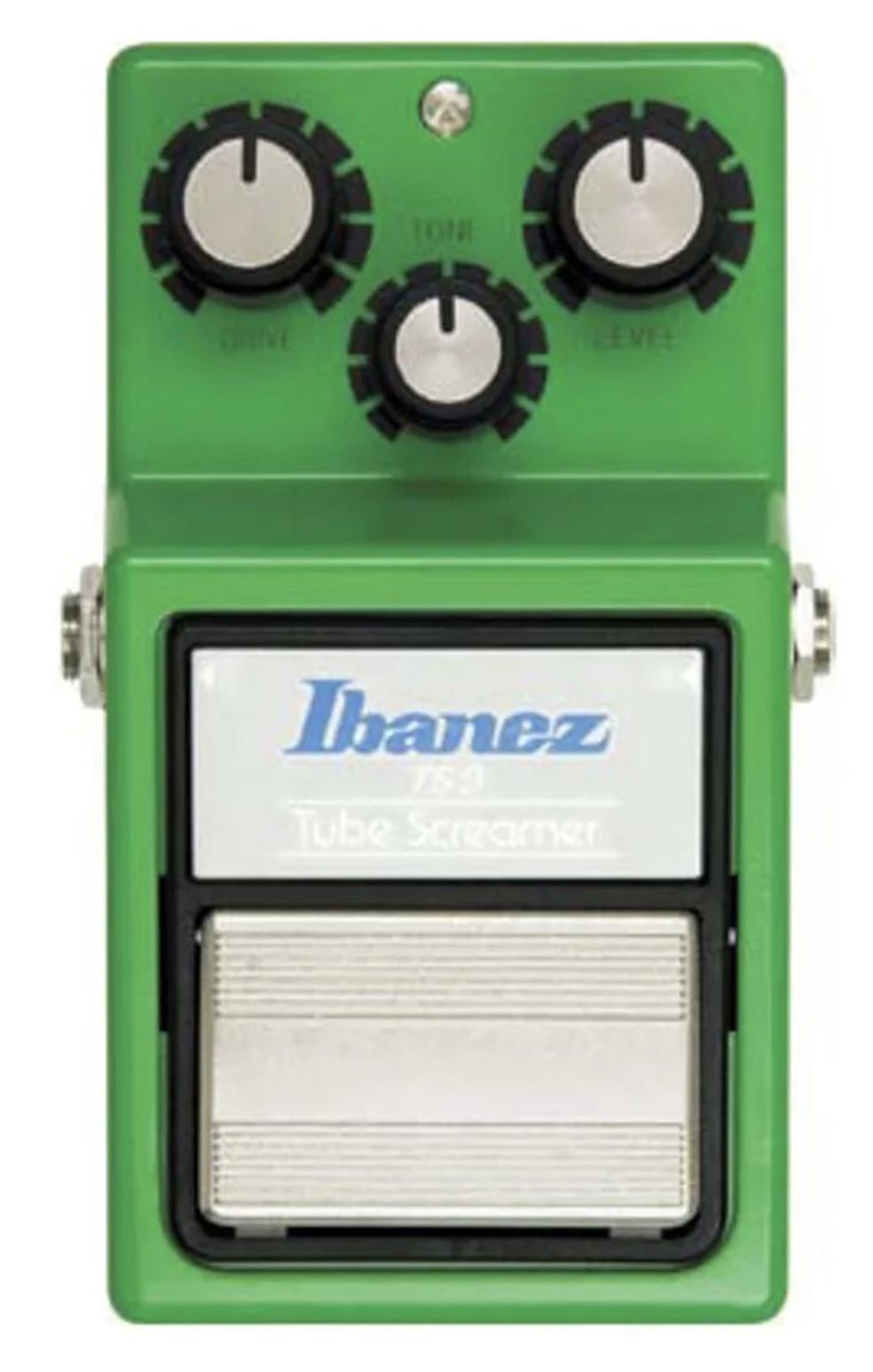
Series: 9 Series
Knob Configuration: Overdrive, Tone, Level
Notes: Faithful reproduction of the original TS9
Country of Origin: Japan
TS9DX (1998-Present)
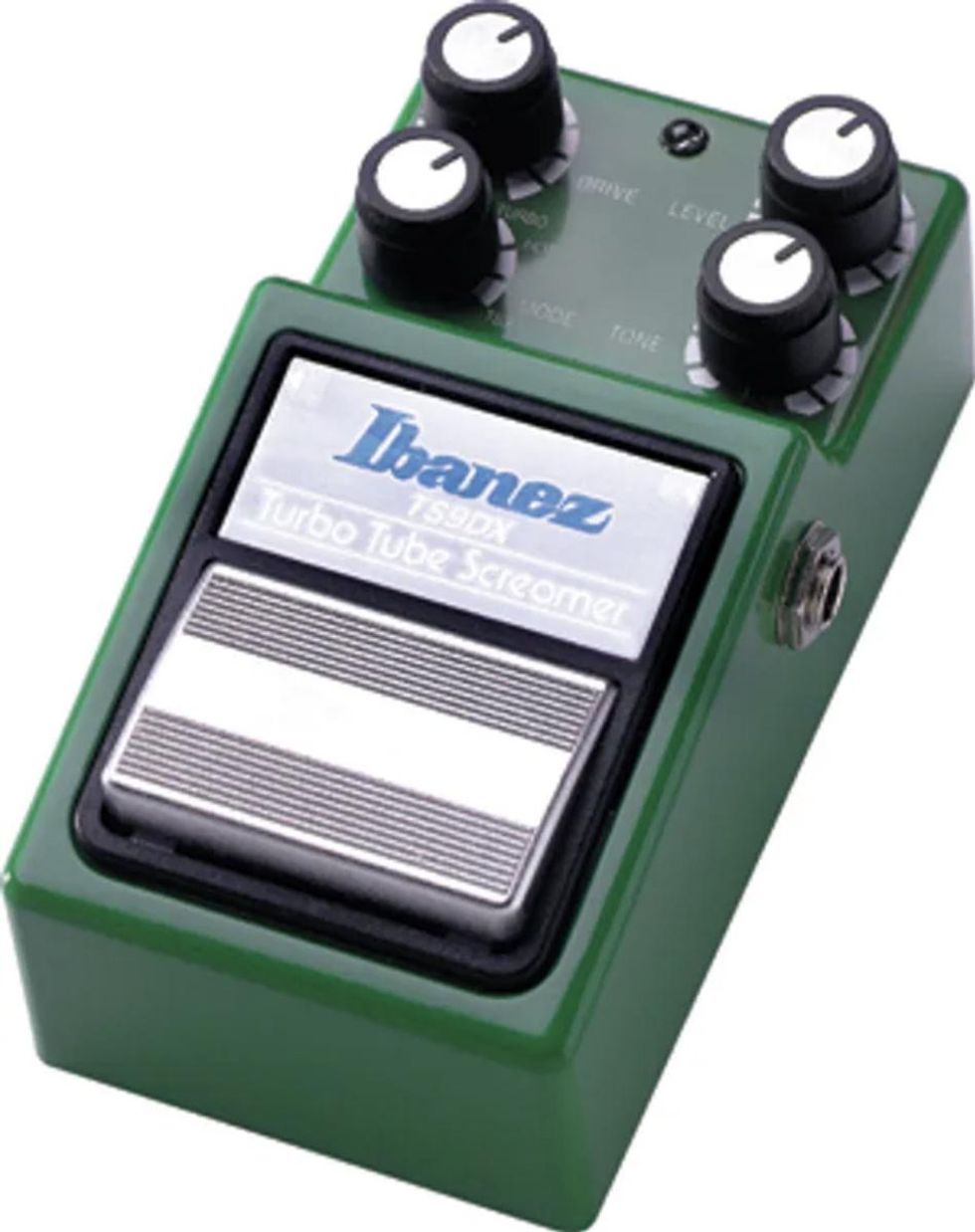
Series: 9 Series
Knob Configuration: Overdrive, Tone, Level, Mode
Notes: Offers traditional Tube Screamer tones, as well as three additional modes with increasing amounts of volume and bass response.
Country of Origin: Japan
With the success of the TS9 reissue, the TS9DX seemed like a no-brainer. According to Lomas, the company watched, a glint of envy in its eye, as Dunlop multi-load wah pedals flew off the shelves. Hoshino felt it needed a Tube Screamer with different modes for output and distortion, and it seemed the only thing to do was to get in on the action.
So, in 1998, Lomas designed the DX for players who craved more volume, distortion, and low end. In addition to the Drive, Tone, and Level knobs that had already become Tube Screamer staples, he added a fourth knob with four mode positions: TS9, +, Hot, and Turbo, each one adding low end and increasing volume to some degree. The circuit is exactly the same as that of the original TS9, but the mode switch changes certain components' parameters via clipping diodes and tone capacitors. The + mode is grittier than the original TS9, whereas Hot yields a crunchier tone with boosted mids, and Turbo, the most powerful of the four modes, projects a thicker, more modern sound.
"I wanted to come up with something that would be as true to the Tube Screamer tonality as possible, so that at least in one position it would be a classic Tube Screamer," says Lomas. "That's where I came up with the concept of varying the clippers. I didn't want any digital simulation because, in my mind, it just wouldn't be a Tube Screamer then."
A Legacy of Mids
In the past decade, the Tube Screamer has continued to evolve with new editions such as the TS7 Tone-Lok, the TS808 reissue, the TS9B—the first Tube Screamer for bass—and the 2010 introduction of the Tube Screamer amp—an ultra-portable, low-wattage amp (available in head and combo versions) that incorporates a selectable Tube Screamer circuit in its preamp. So far, 15-watt head and combo models are available, although models with varying wattages are rumored to be in the works.
Despite the Tube Screamer's many variations, Ibanez electronics merchandiser Frank Facciolo says its legendary sound is rooted in its characteristic midrange presence. Lomas agrees. "It's still one of the best things to overdrive any tube amplifier with," he says. "It just does magical things to tubes."

[Updated 7/27/2021]













![Rig Rundown: AFI [2025]](https://www.premierguitar.com/media-library/youtube.jpg?id=62064741&width=1245&height=700&quality=70&coordinates=0%2C0%2C0%2C0)












 Shop Scott's Rig
Shop Scott's Rig
